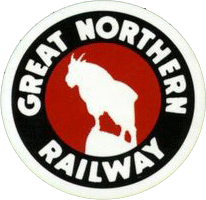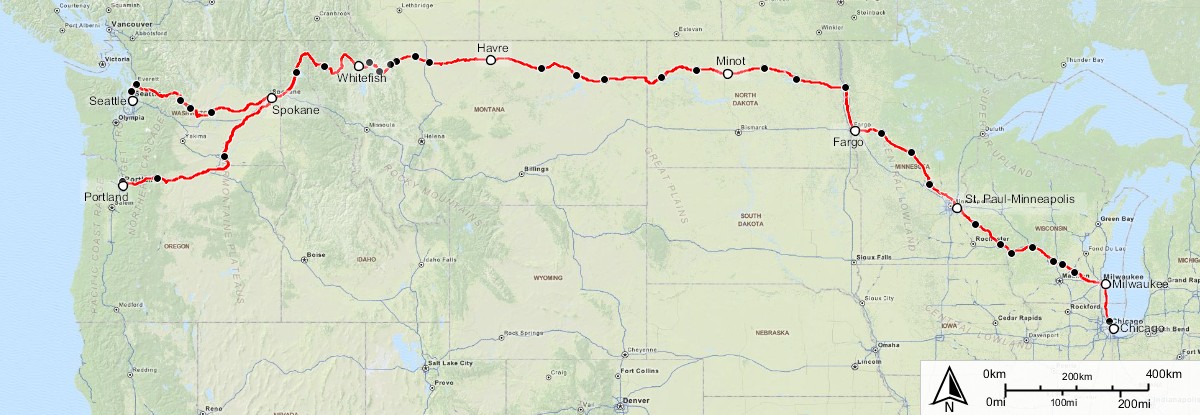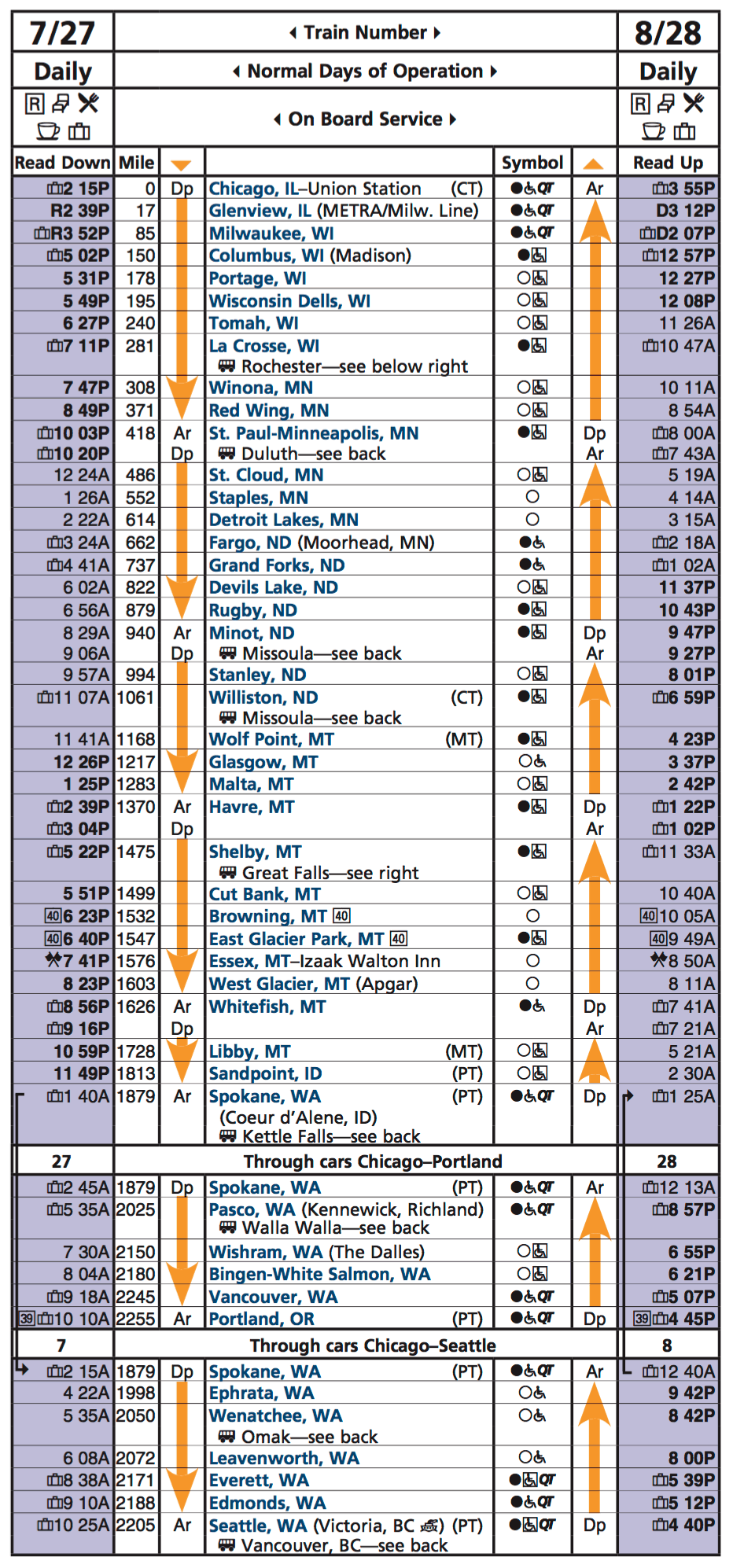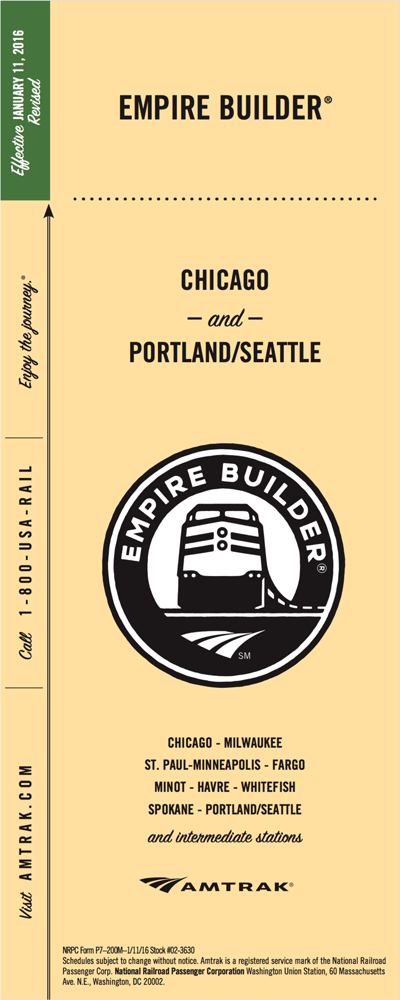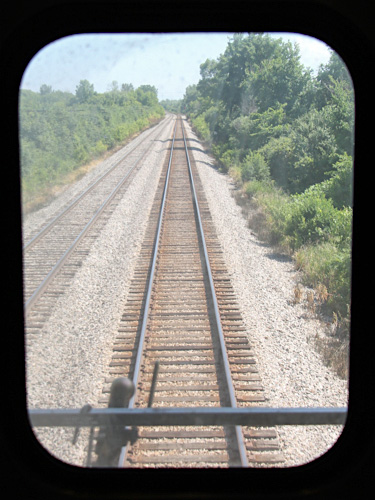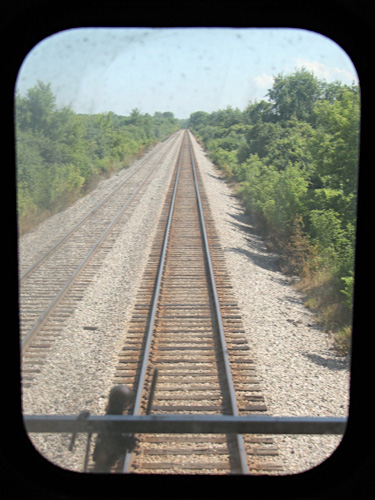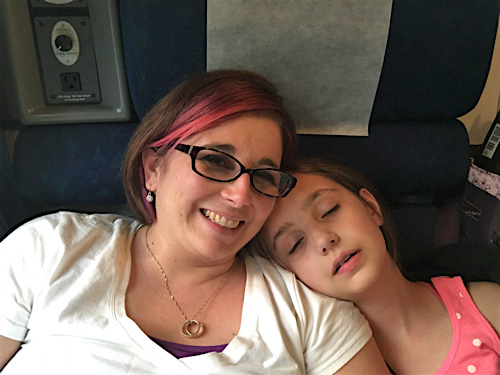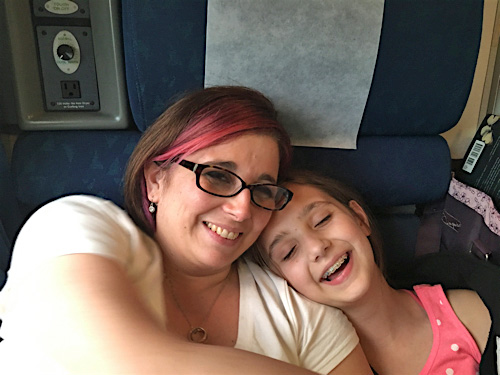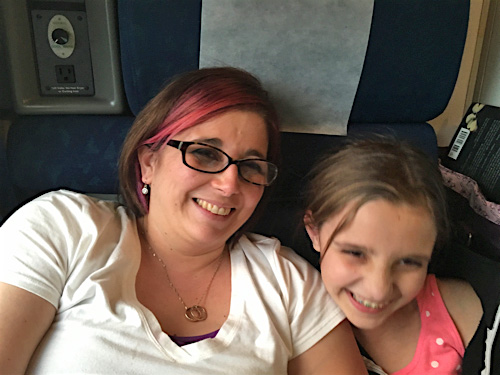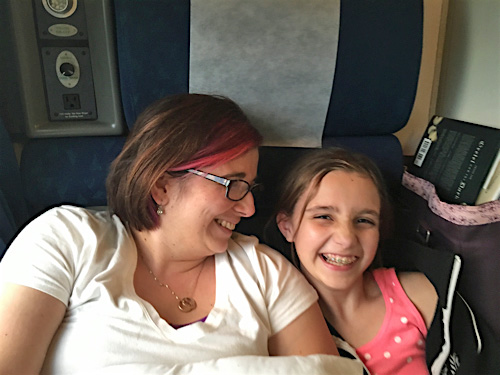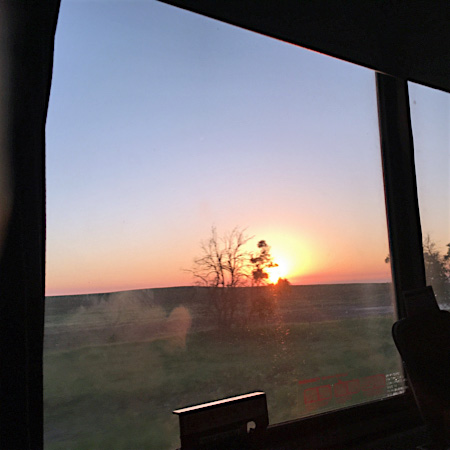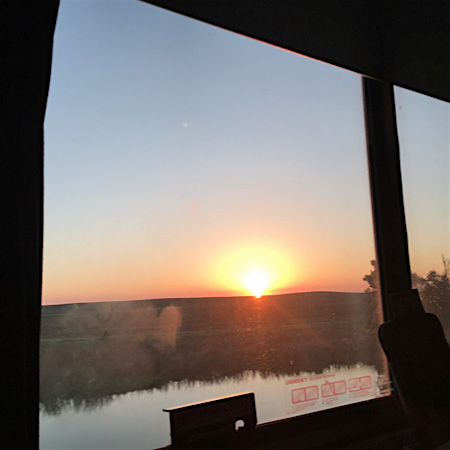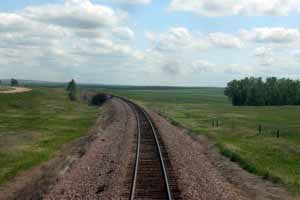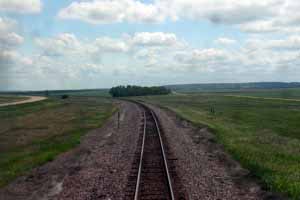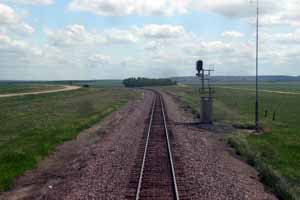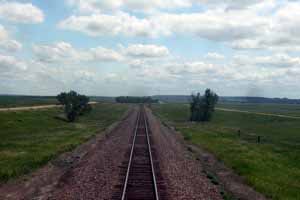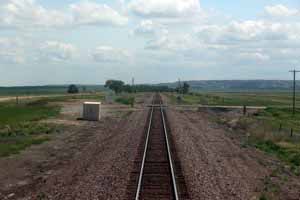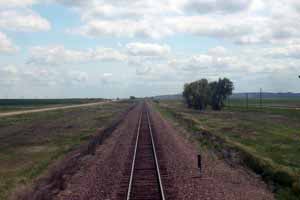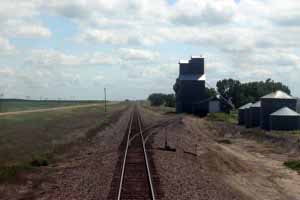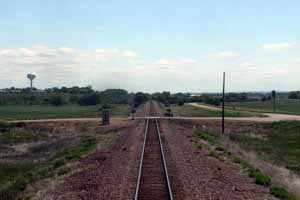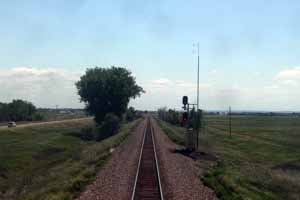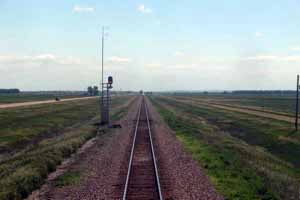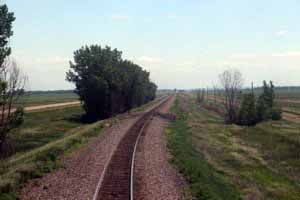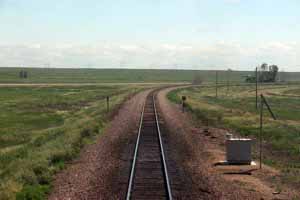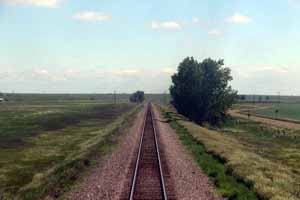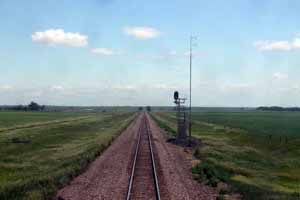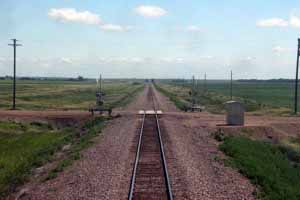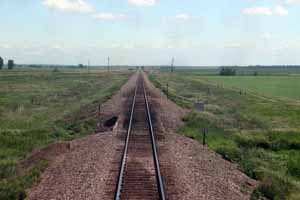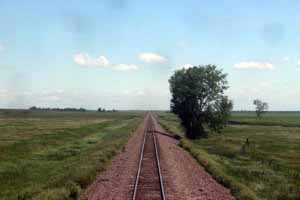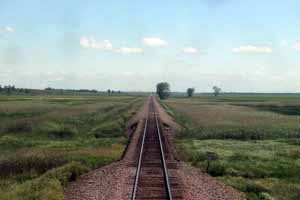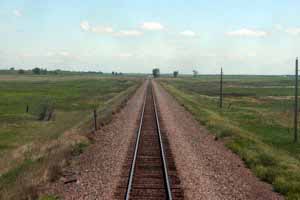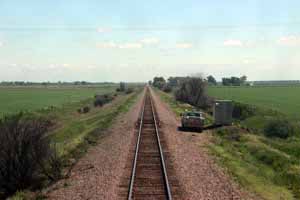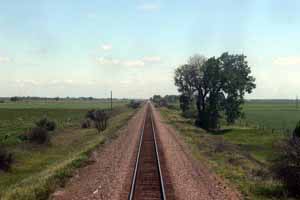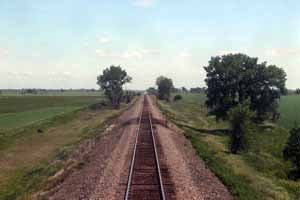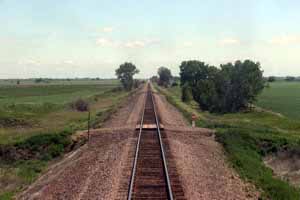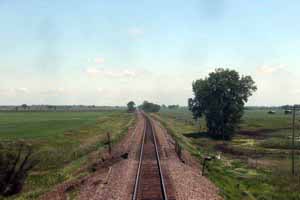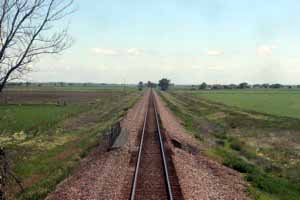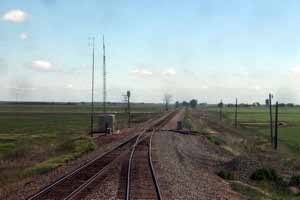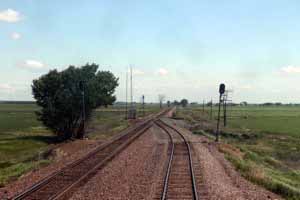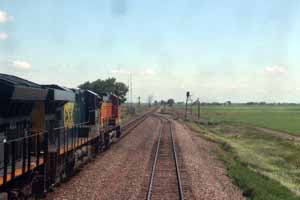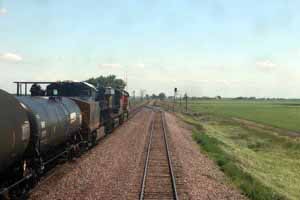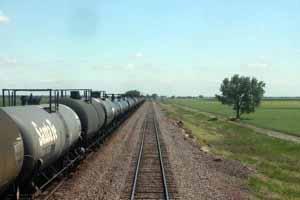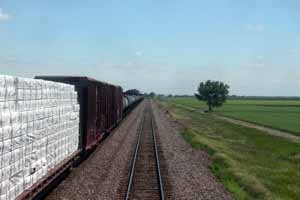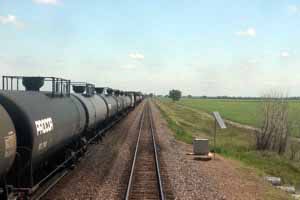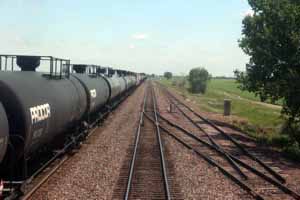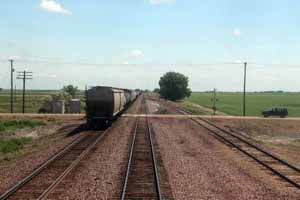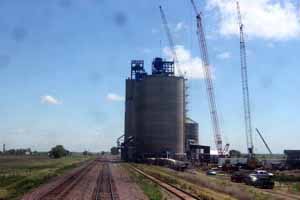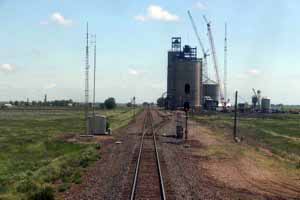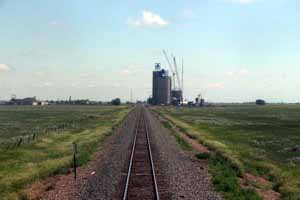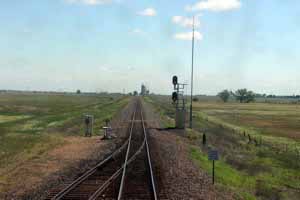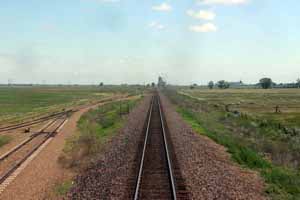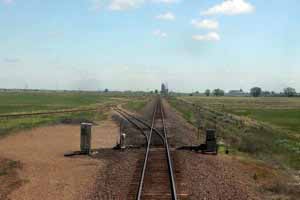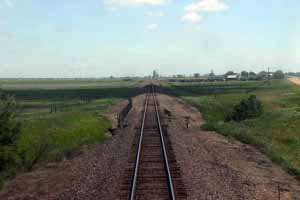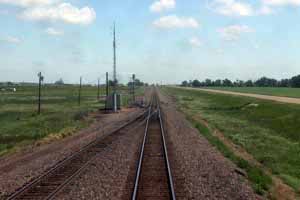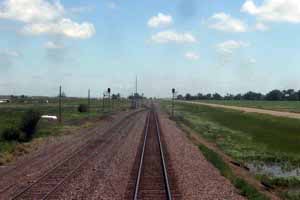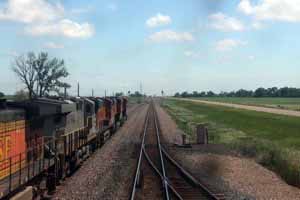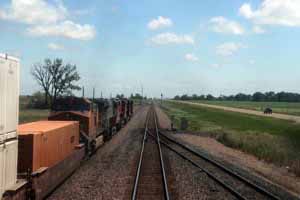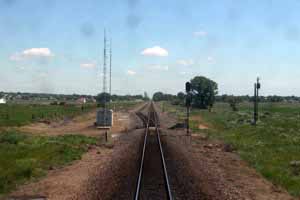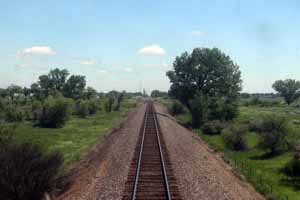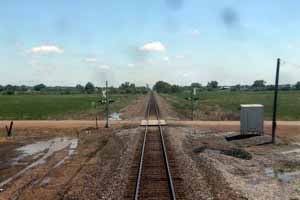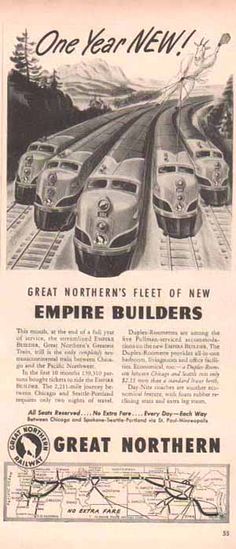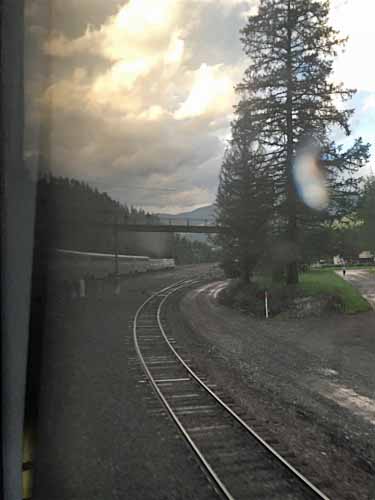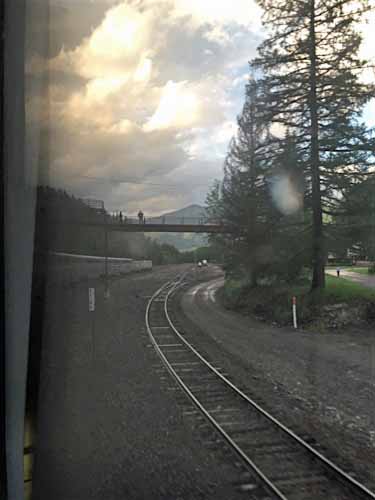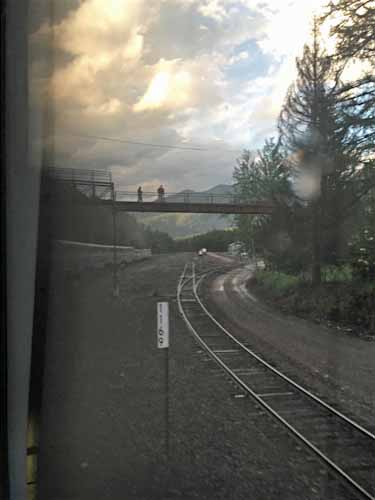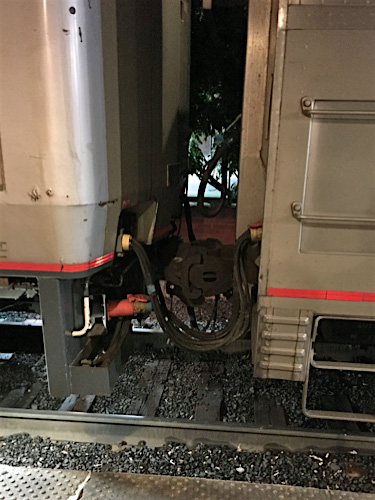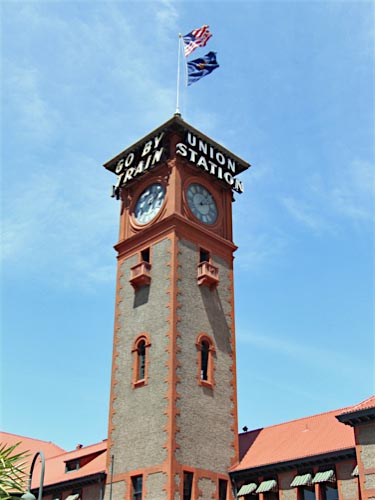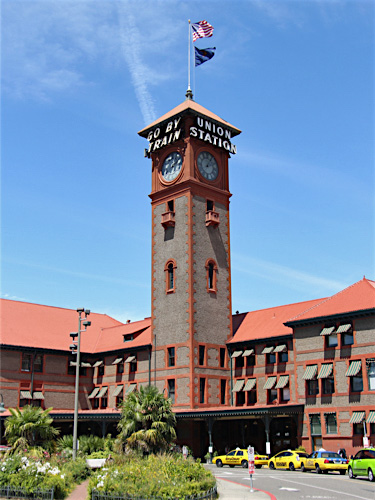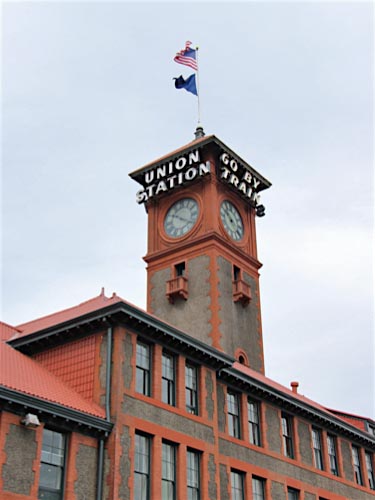

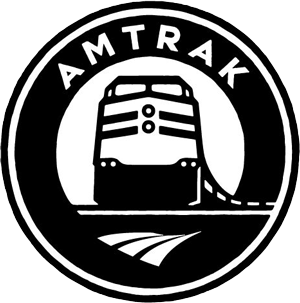
Empire Builder
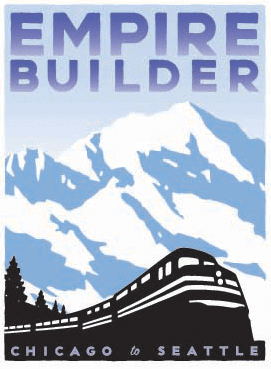
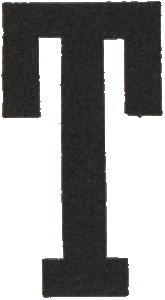 he Empire Builder is a daily passenger train operated by Amtrak across the upper midwestern and northwestern United States. By most measures it is Amtrak's busiest and most popular long-distance route, running from Chicago to two major cities in the Pacific Northwest. The westbound train splits into two smaller segments in Spokane, Washington, with the northern segment terminating at King Street Station in Seattle and its southern segment terminating at Union Station in Portland. On June 11, 1929, the Great Northern Railway inaugurated the Empire Builder to honor the company's founder, James J. Hill -- known as "The Empire Builder" for reorganizing several failing railroads into a transcontinental system that reached the Pacific Northwest in the late 19th century. After World War II, the Great Northern placed new streamlined and diesel-powered trains in service that cut the 2,211 miles between Chicago and Seattle from 58.5 hours down to 45 hours. In 1970, the Great Northern merged with other railroads to form the Burlington Northern Railroad, which assumed operation of the Empire Builder. One year later, Amtrak assumed operation of most of the nations' passenger trains and subsequently shifted the Chicago to St. Paul leg of the train to the Milwaukee Road route through Milwaukee. The main segment to and from Seattle is numbered Amtrak 7 and 8, the Portland section is numbered 27 and 28, and a peak-demand coach between Chicago and St. Paul is numbered 807 and 808 when used.
he Empire Builder is a daily passenger train operated by Amtrak across the upper midwestern and northwestern United States. By most measures it is Amtrak's busiest and most popular long-distance route, running from Chicago to two major cities in the Pacific Northwest. The westbound train splits into two smaller segments in Spokane, Washington, with the northern segment terminating at King Street Station in Seattle and its southern segment terminating at Union Station in Portland. On June 11, 1929, the Great Northern Railway inaugurated the Empire Builder to honor the company's founder, James J. Hill -- known as "The Empire Builder" for reorganizing several failing railroads into a transcontinental system that reached the Pacific Northwest in the late 19th century. After World War II, the Great Northern placed new streamlined and diesel-powered trains in service that cut the 2,211 miles between Chicago and Seattle from 58.5 hours down to 45 hours. In 1970, the Great Northern merged with other railroads to form the Burlington Northern Railroad, which assumed operation of the Empire Builder. One year later, Amtrak assumed operation of most of the nations' passenger trains and subsequently shifted the Chicago to St. Paul leg of the train to the Milwaukee Road route through Milwaukee. The main segment to and from Seattle is numbered Amtrak 7 and 8, the Portland section is numbered 27 and 28, and a peak-demand coach between Chicago and St. Paul is numbered 807 and 808 when used.
Traveling daily between Chicago and the Pacific Northwest along major portions of the Lewis and Clark trail, the mighty Empire Builder takes you on an exciting adventure through majestic wilderness, following the footsteps of early pioneers. From Chicago, you'll have magnificent views of the Mississippi and see the glowing night skyline of Minneapolis and St. Paul. Awake the next morning as you cross the North Dakota plains and travel over the spectacular Gassman Coulee Trestle. Skirting the Missouri, you'll cross into the Big Sky country in Montana, passing by a travelers favorite, Glacier National Park. From Spokane, you can continue on to Seattle or head down the Columbia River Gorge toward Portland for spectacular views of Mt. Hood and Beacon Rock.

I've wanted to ride the Empire Builder for as long as I can remember. The name itself demands respect, and I always imagined that the scenery along this northernmost route would be outstanding. Furthermore, as a southerner, the Great Northern always held a certain allure as a railroad with which I had no direct contact but in which I had great interest. My last transcontinental trip was way back in the 1980s when my parents and I rode the Sunset Limited back from Los Angeles all the way to New Orleans. Thirty years ago now, I was long overdue for an overnight trek to the west coast on Amtrak.
My opportunity to board the Builder came when my church denomination chose to hold its national meeting in Portland, Oregon. No sooner had that announcement been made and I was making plans in my head to ride this route. My wife, daughter, and I boarded the Capital Limited in Pittsburgh late on a Tuesday evening, riding coach overnight to Chicago. That's a leg I've done several times, and I was grateful that the inbound Capital did not lose too much time in the freight congestion of the Windy City. My mother flew in from New Orleans and met us at Union Station on Wednesday morning. After breakfast at the famous Lou Mitchell's diner just down the street, we boarded #7/27 early for an on-time afternoon departure toward Milwaukee.
Our destination being Portland, our sleeper was on the rear of the train. This was a pleasant surprise. I knew the westbound Builder was split each night at Spokane, but I did not know how that was done. Turns out the rear half of #7 -- a lounge car, several coaches, and one or two sleepers -- is actually #27, the Portland section of the Builder. My daughter and mom landed in a downstairs roomette, but my wife and I landed upstairs in roomette #9 -- the last room of the last car on the right side of the train. Perfection. This location made for easy access to the trailing door for rearward viewing. I've said it for years: If you can't ride up front, then the next best place is on the rear.
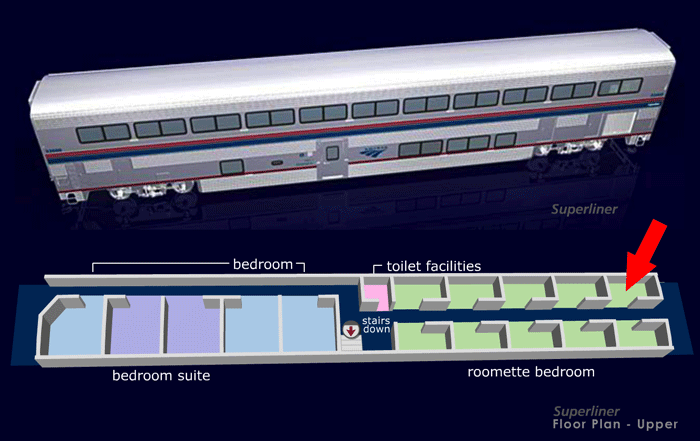
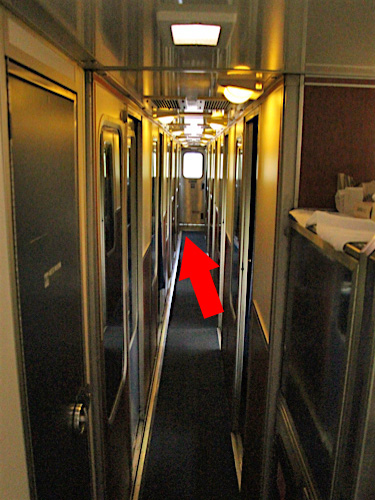
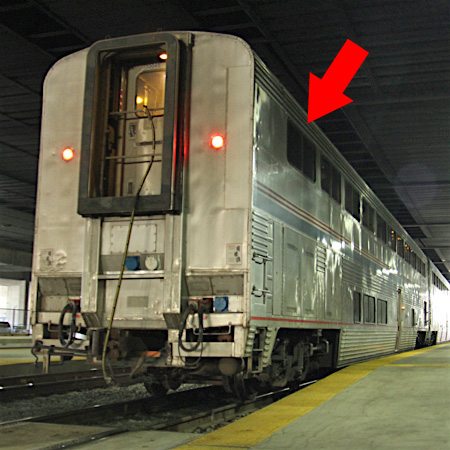
#7/27 is an impressive train, making use of the basic Amtrak long-distance setup for rolling stock but adding some additional coaches and sleepers to accommodate the two sections west of Spokane. Two Genesis units were on the point, in the standard paint schemes, followed by a brand new baggage car, transition crew sleeper, Seattle sleepers, dining car, Seattle coaches, lounge car, Portland coaches, and then our Portland sleeper. The Superliner equipment is really showing its age on the inside. Outside, the stainless steel is holding up very well; long trains still look good rolling by. But inside, despite maintenance and interior renovations, you can tell in most of the coaches, sleepers, and lounges that this equipment has been at it for some time. Even so, most of the cars rode well at 79 mph ... although I was surprised at the number of stretches of rough mainline trackage on the otherwise modern BNSF.
But it was the scenery, not the Superliner equipment, that made the trip. I had never travelled to or in the northernmost states along our Canadian border. North Dakota and eastern Montana were amazing: long stretches of flatlands followed by rolling hills. The sunset leaving Minnesota and the sunrise in North Dakota were wonderful. Glacier National Park in western Montana was a great treat: Great Northern snowsheds, mountain moose, and mainline switchbacks going up and over and down the divide. But I think my favorite section was, for us, Friday morning -- the last day of the ride. We woke up running at a full on sprint along the Washington side of the beautiful Columbia River. Early in the morning hours we had lost the front two-thirds of #7, so as #27 now the lounge car was right up against our lone Genesis unit. This meant you could stand at the upstairs exterior door and see right down the roofline of the P42. Despite the diesel fumes, it was a great ride at 79 mph along the river -- passing tugboat barges on the water and BSNF freights on the rails. We ran like that all morning, until the speeds gave way to the city limits and we inched our way through the trackage and down into the amazing Portland Union Station -- one of the nicest throwback American railroad stations I have ever seen.
All in all, it was a great ride. Amtrak's future as a railroad empire is not quite as bright or expansive as James Hill might have imagined his legacy, but the Builder lived up to its reputation as a great trip across a impressive and rugged part of the continent.
Snapshots
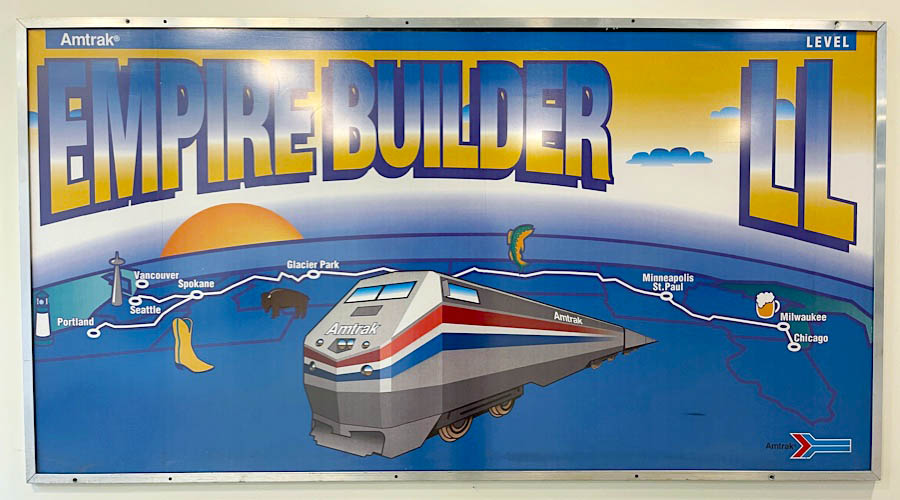
Chicago, Il / Sep 2023 / RWH
Day 1 - Illinois, Wisconsin, Minnesota
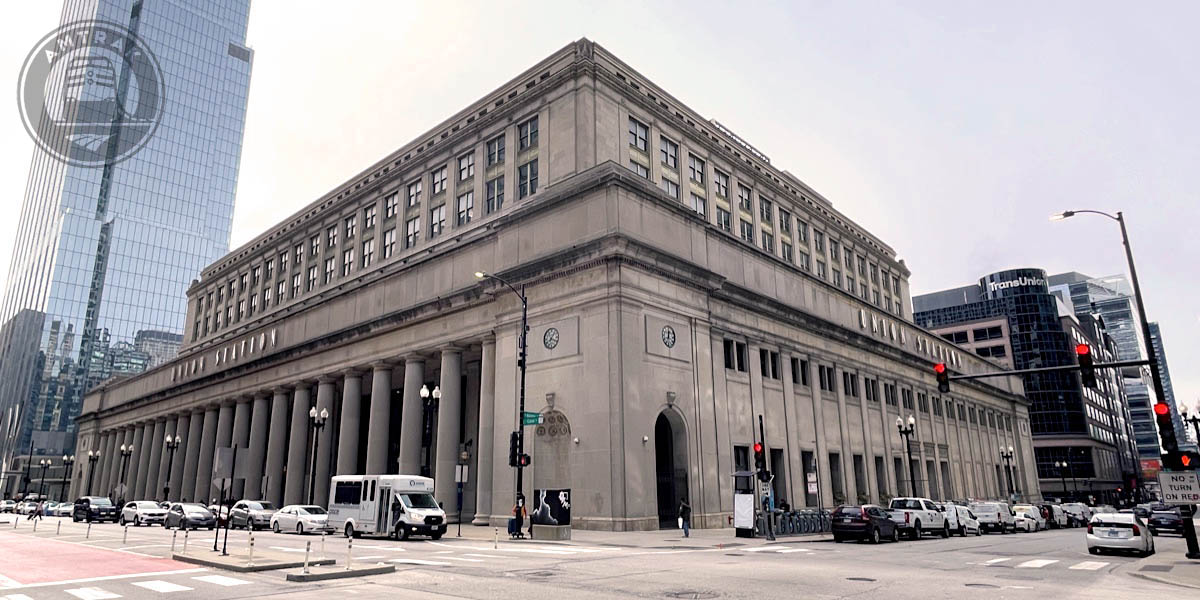
Chicago Union Station
Chicago, Il / Mar 2023 / RWH
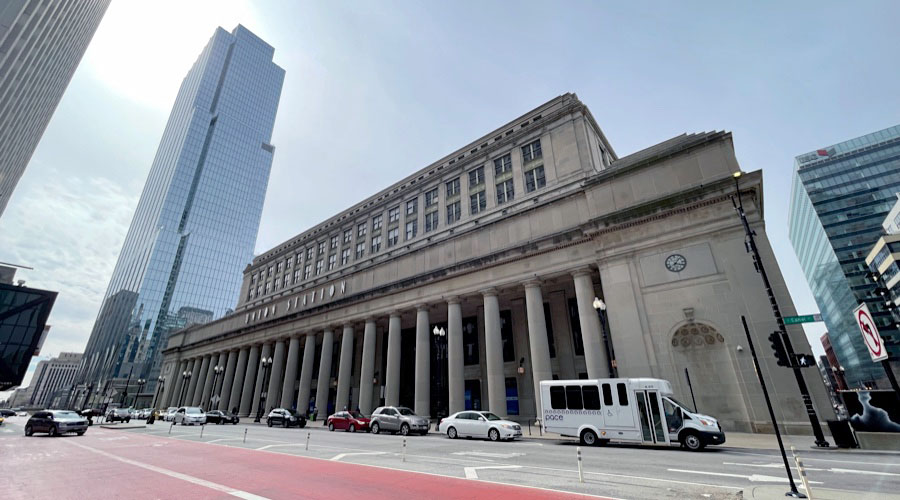
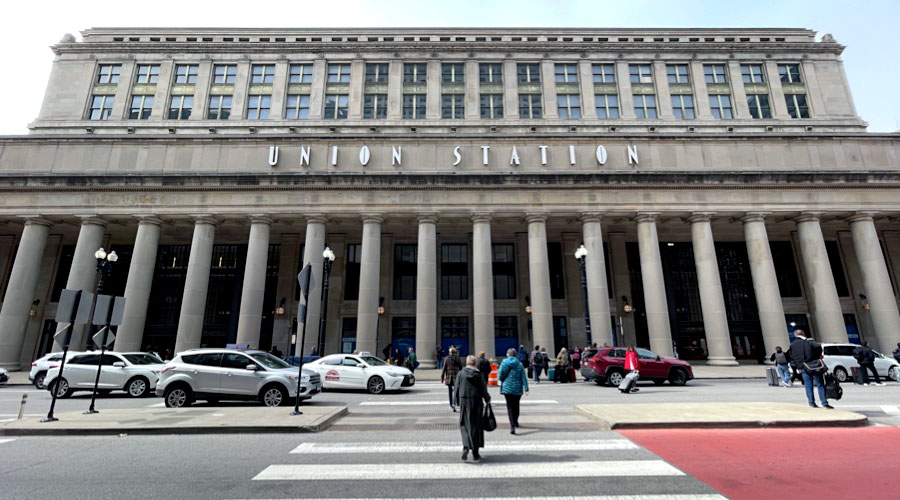
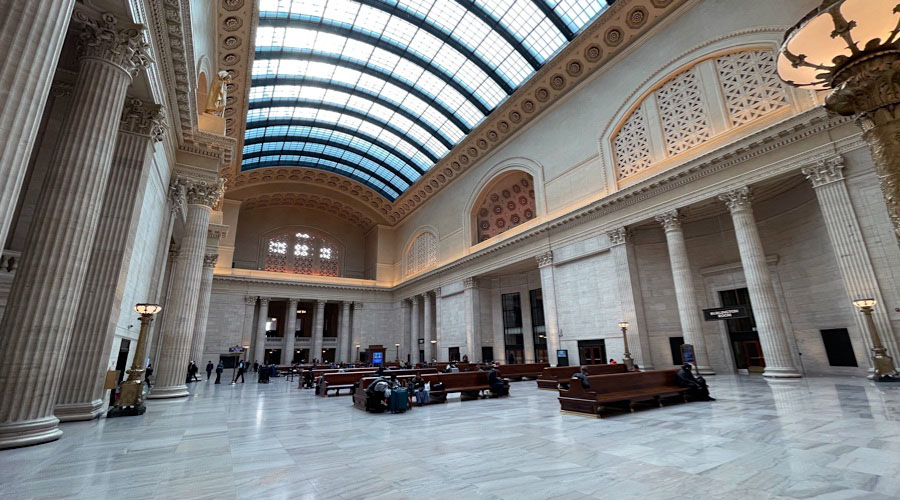
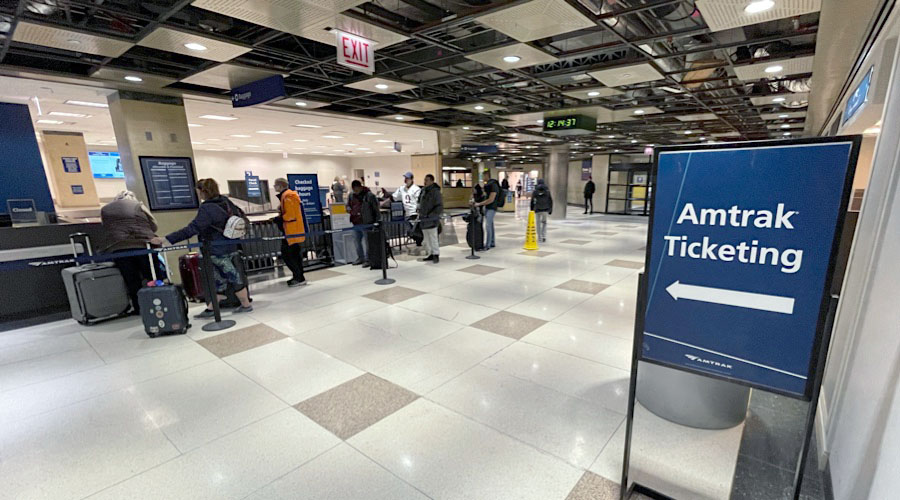
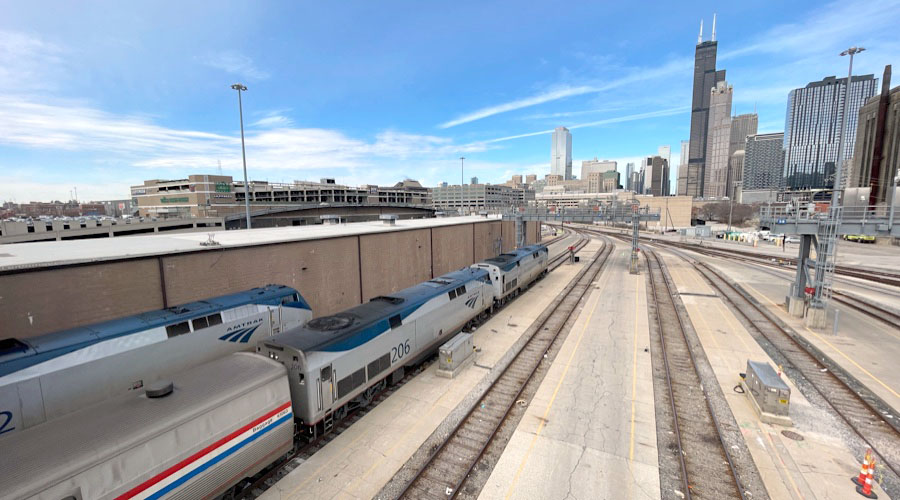

See our complete Chicago Union Station scrapbook in Amtrak Great Stations
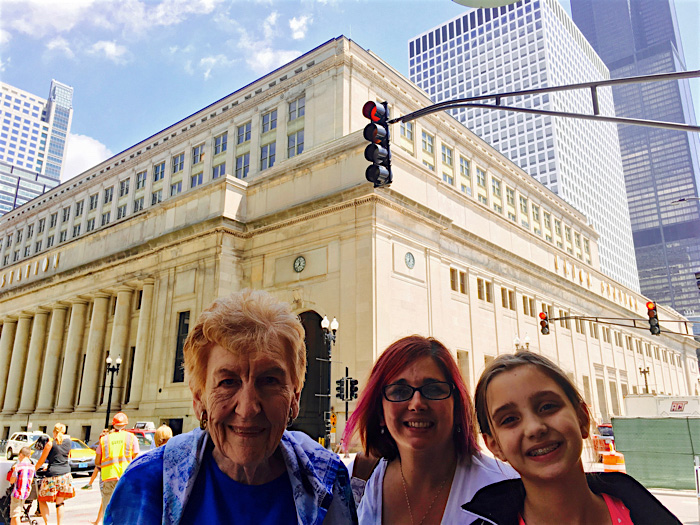
Union Station / Chicago, Il / Jun 2016 / RWH
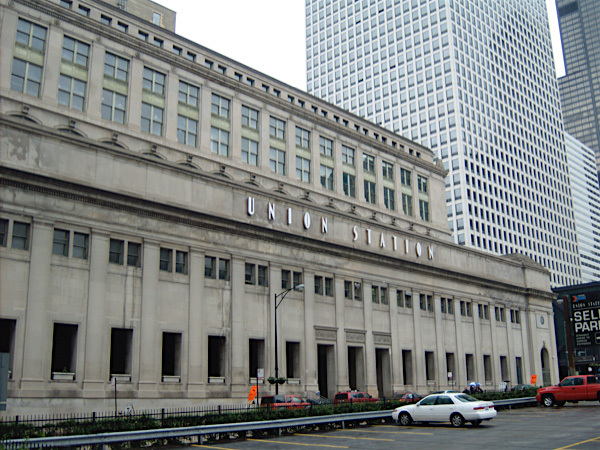
Chicago, Il / Jun 2016 / RWH
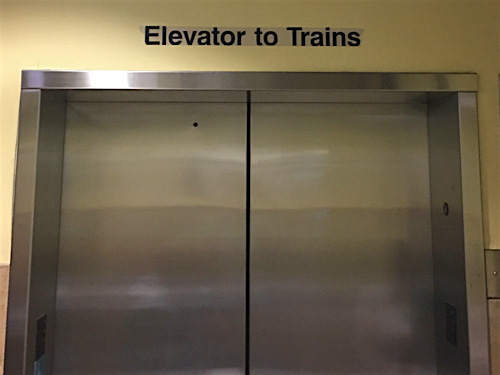
Chicago, Il / Jun 2016 / RWH
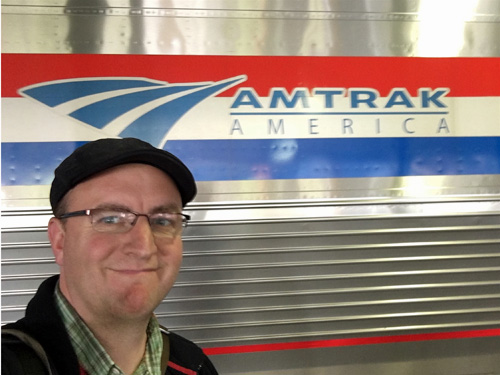
Chicago, Il / Jun 2016 / RWH

Click to see Chicago Union Station plotted on a Google Maps page
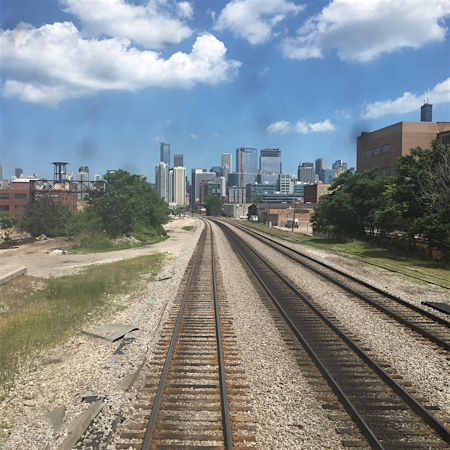
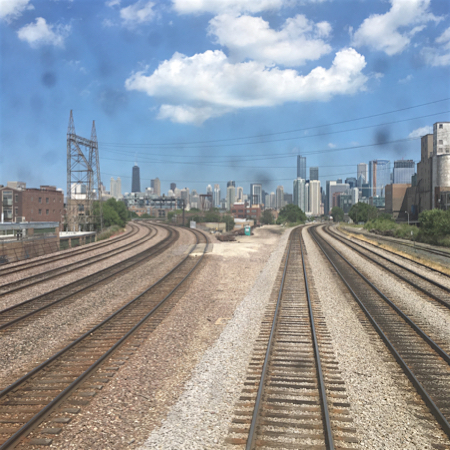
southward view of skyline / Chicago, Il / Jun 2016 / RWH
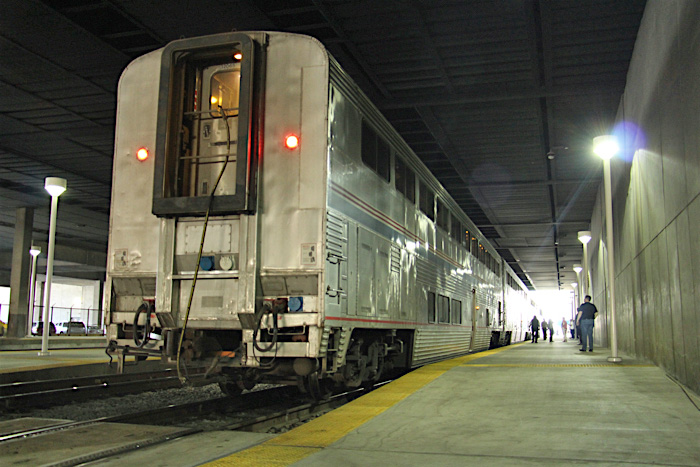
station platform / Milwaukee, Wi / Jun 2016 / RWH
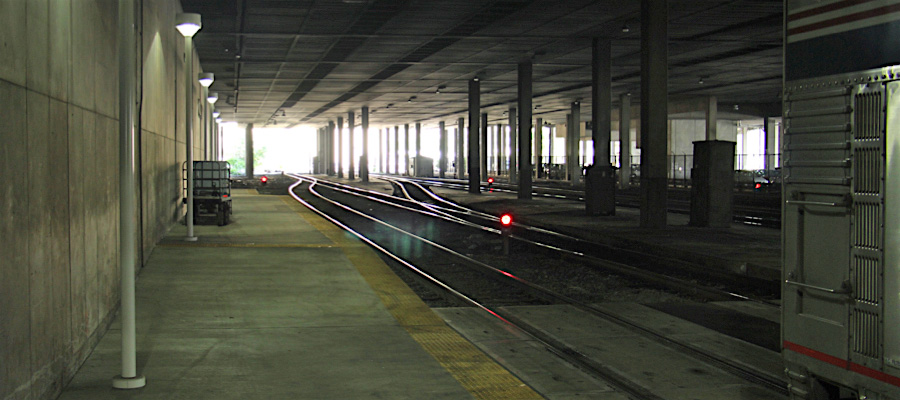
Milwaukee, Wi / Jun 2016 / RWH
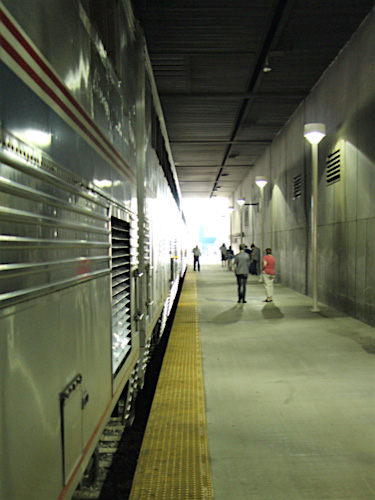
Milwaukee, Wi / Jun 2016 / RWH
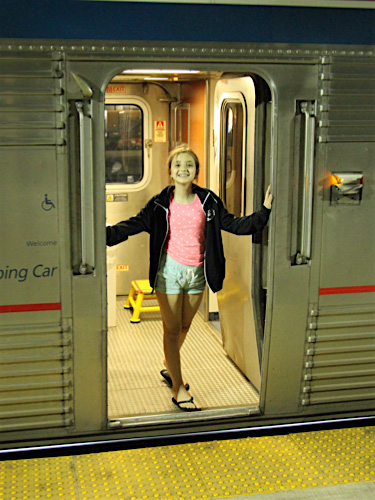
Milwaukee, Wi / Jun 2016 / RWH
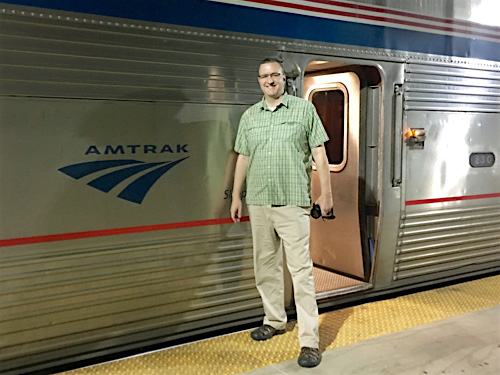
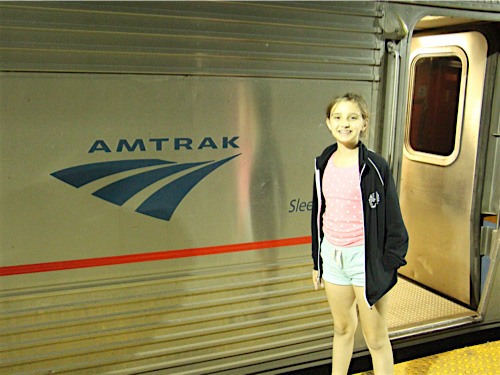
Milwaukee, Wi / Jun 2016 / RWH

Click to see Milwaukee Intermodal Station plotted on a Google Maps page
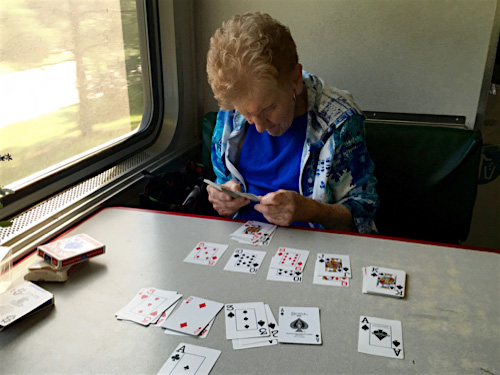
Brookfield, Wi / Jun 2016 / RWH
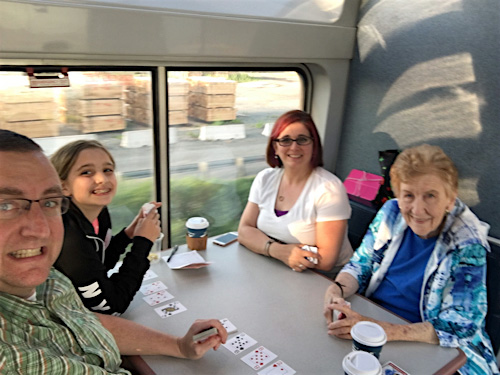
Brookfield, Wi / Jun 2016 / RWH
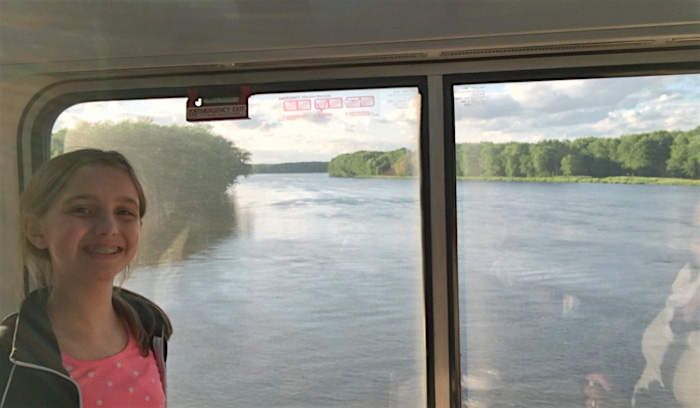
crossing the Mississippi River / Jun 2016 / RWH
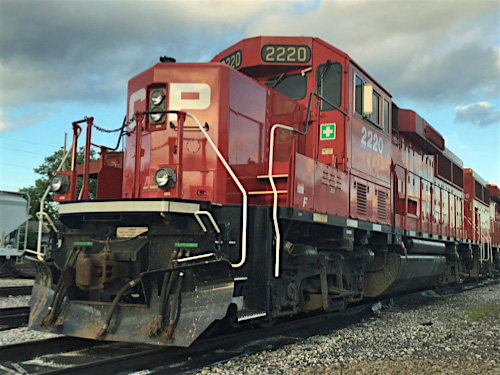
Canadian Pacific #2220
Winona, Mn / Jun 2016 / RWH


Canadian Pacific #2220
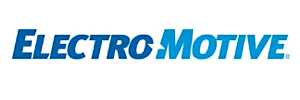
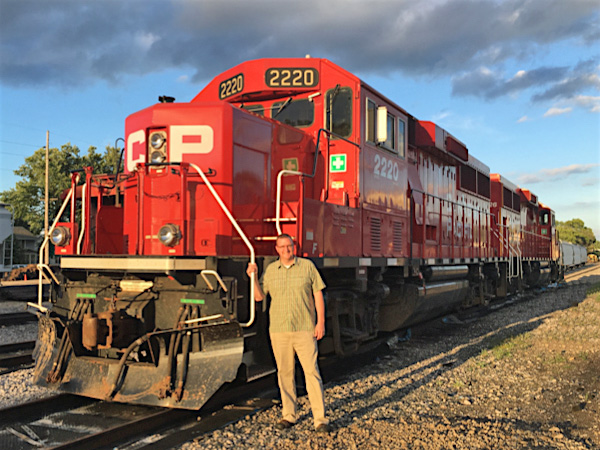
Winona, Mn / Jun 2016 / RWH

Click to see the Winona Amtrak station plotted on a Google Maps page
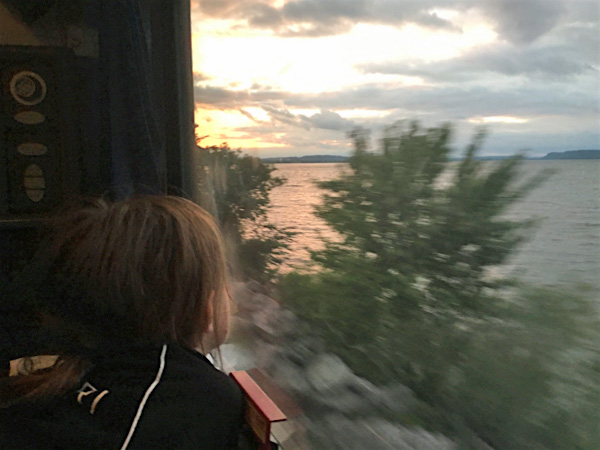
Lake City, Mn / Jun 2016 / RWH
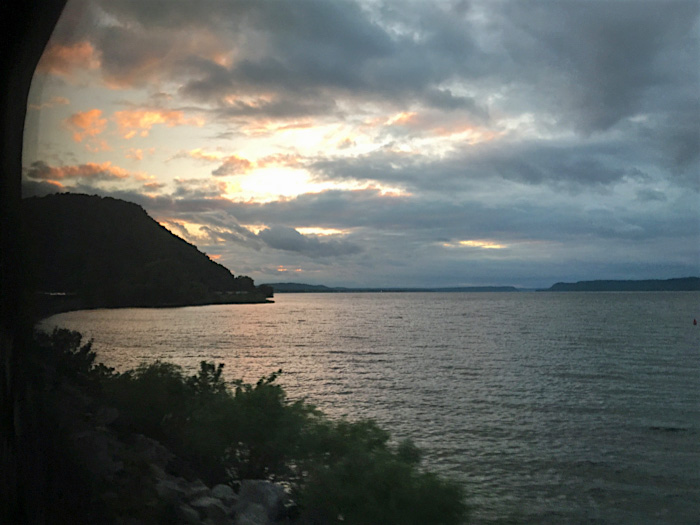
Lake City, Mn / Jun 2016 / RWH
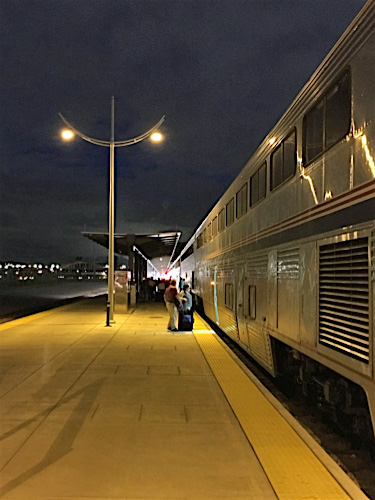
station platform / St. Paul, Mn / Jun 2016 / RWH
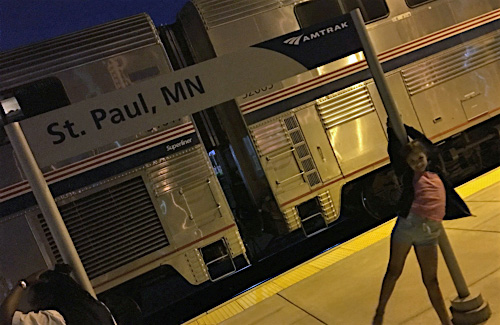
St. Paul, Mn / Jun 2016 / RWH
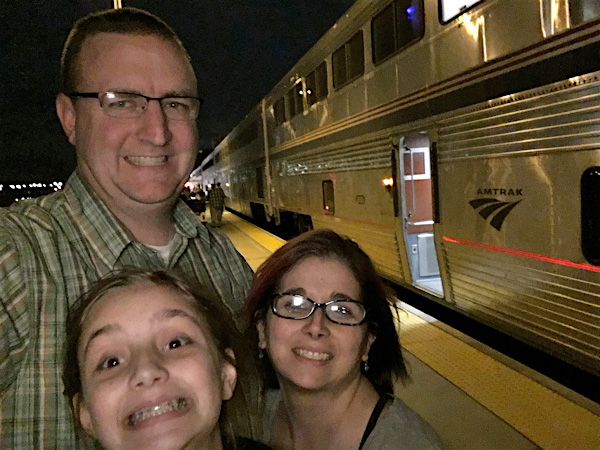
St. Paul, Mn / Jun 2016 / RWH
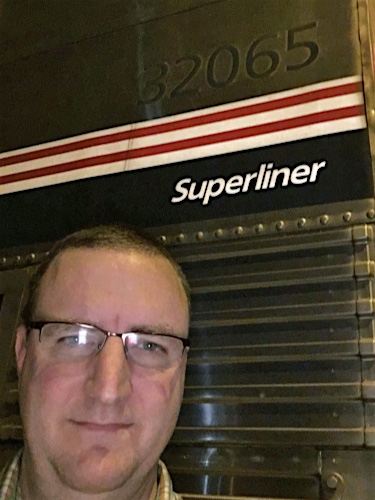
RWH

Click to see the St. Paul Union Depot station plotted on a Google Maps page
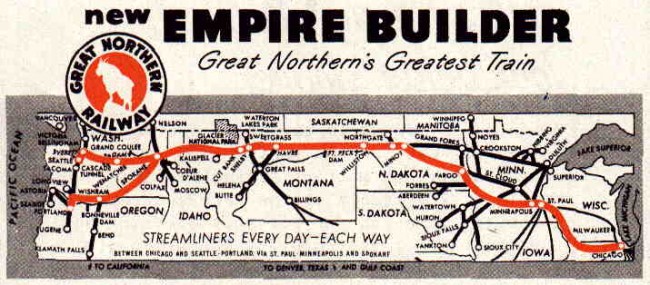
Day 2 - North Dakota, Montana
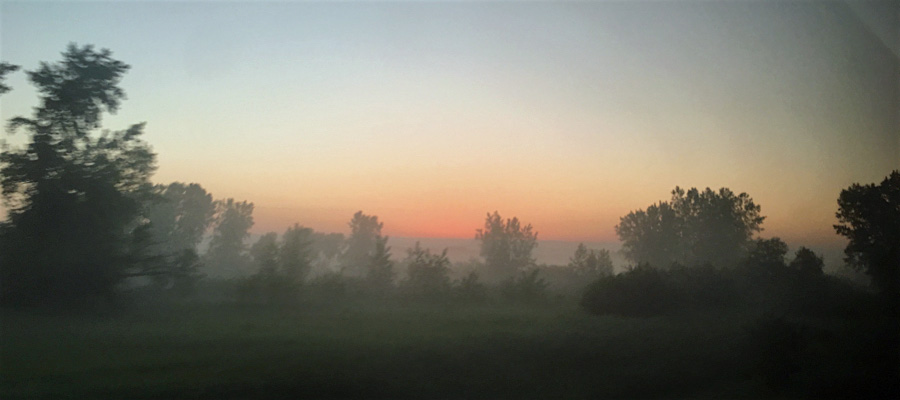
Chester, ND / Jun 2016 / RWH
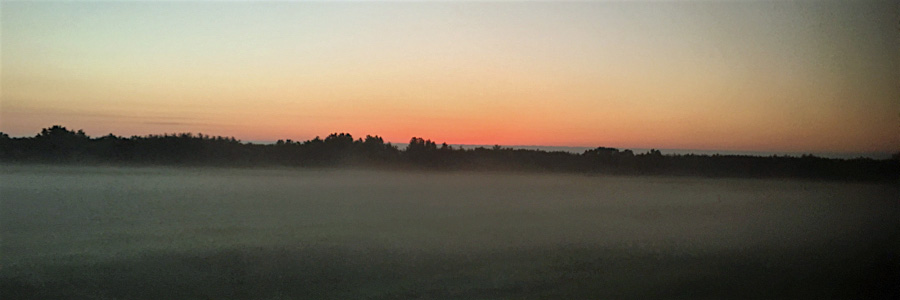
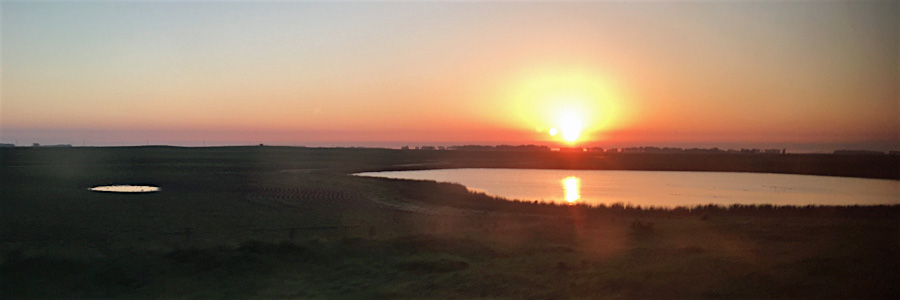
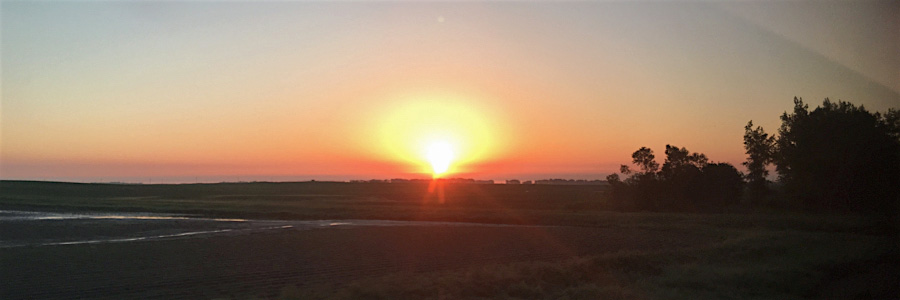
Petersburg, ND / Jun 2016 / RWH
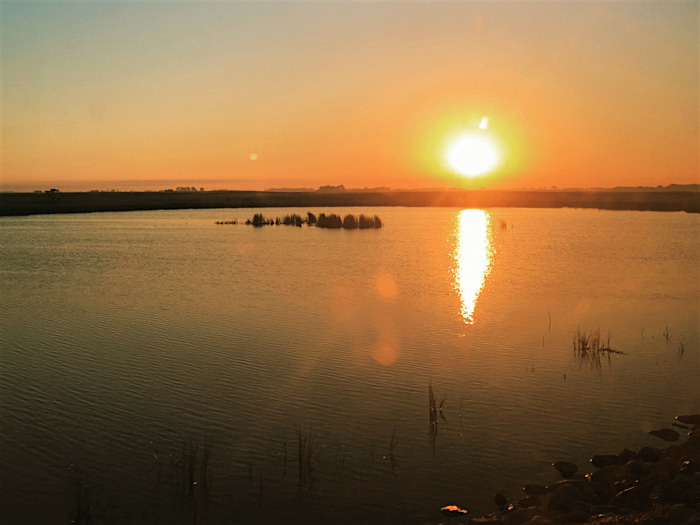
Michigan, ND / Jun 2016 / RWH
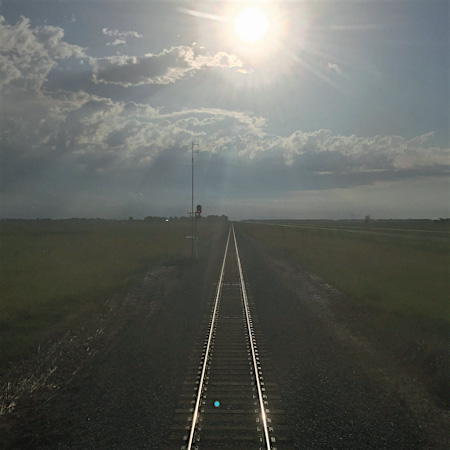
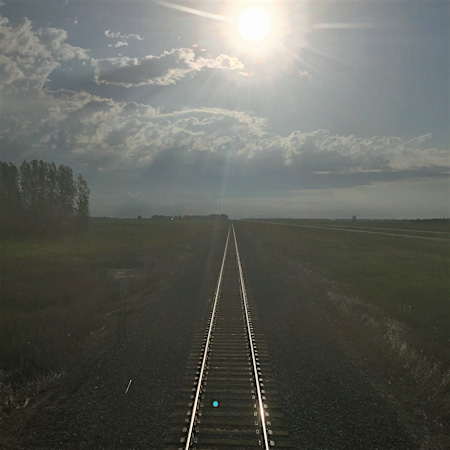
Riga, ND / Jun 2016 / RWH
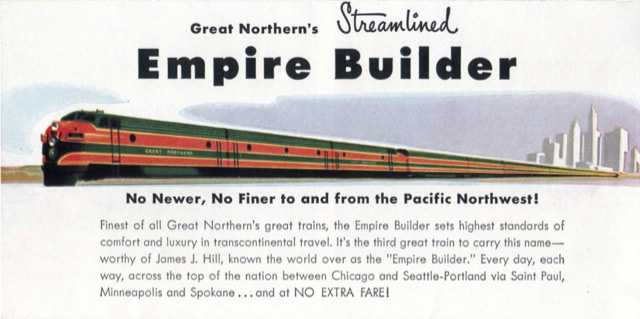
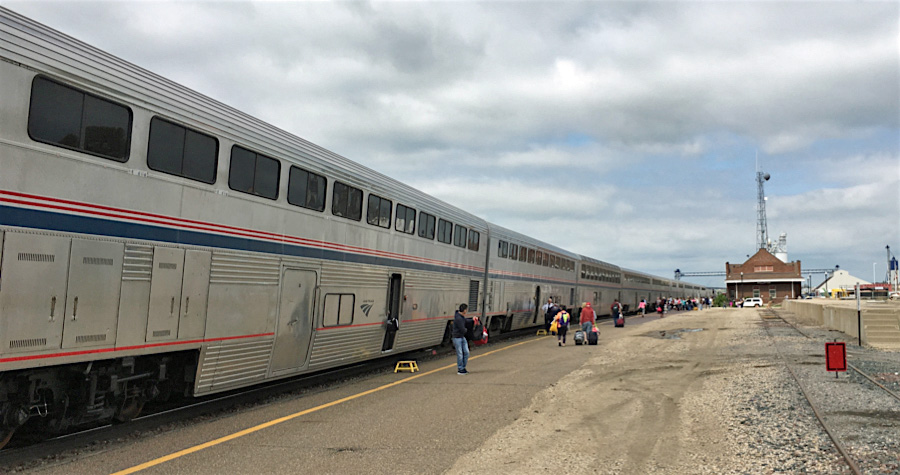
Williston, ND / Jun 2016 / RWH

Click to see Williston Amtrak depot area plotted on a Google Maps page
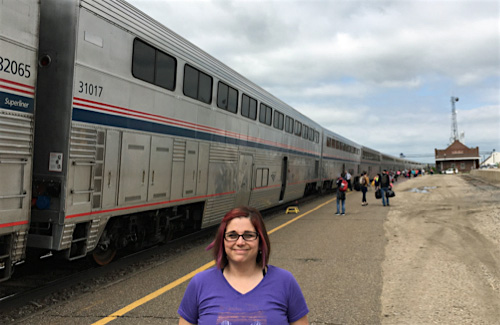
Williston, ND / Jun 2016 / RWH
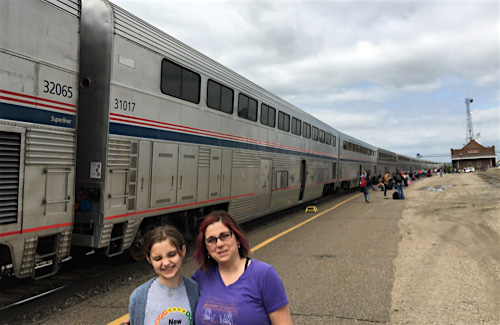
Williston, ND / Jun 2016 / RWH
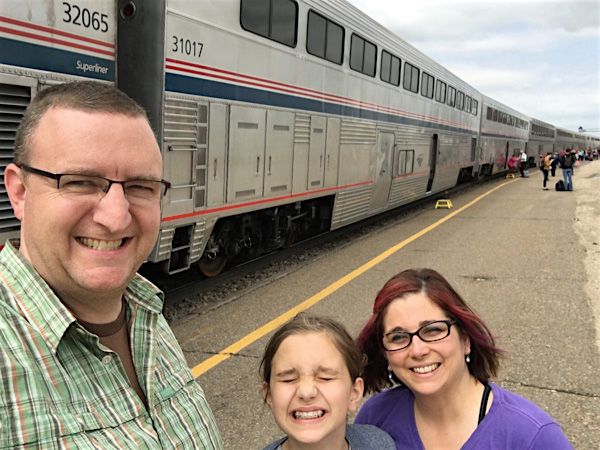
Williston, ND / Jun 2016 / RWH
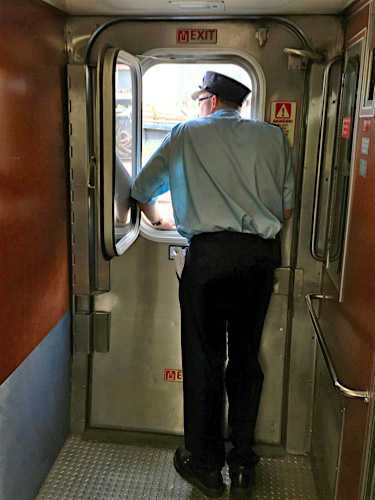
Williston, ND / Jun 2016 / RWH
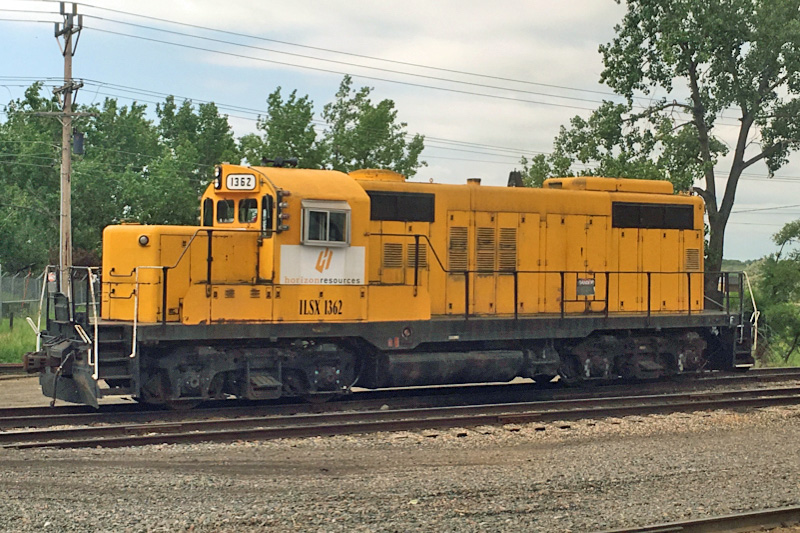
Independent Locomotive Service #1362
Williston, ND / Jun 2016 / RWH


Independent Locomotive Service #1362
to Burlington Northern #1362
to Independent Locomotive Service
lettered Horizon Resources

Montana Mainline

 I spent the better part of an hour of a morning perched at the rear door of our sleeper, near our last room on the the last car on the train, as we clicked off the mainline miles through the wide open middle of Montana. The Burlington Northern Santa Fe is one long steel ribbon through this Big Sky country, and with my DSLR in hand I made a kind of travelogue of the right of way as we moved westbound toward Havre and points beyond. There was plenty to see and document, including a handful of BNSF freights holding in long sidings until we passed by and they could be underway again. The collage below gives a sense of this wonderful Montana mainline running, minus the all lateral movements that keep you off balance and all of the passing grade crossing bells that give a hint of technology in an otherwise remote landscape. By and large, our man up front kept as regulation track speed throughout this territory. But once or twice I checked my phone app and discovered that we were 79 mph ... plus. Fine by me. Not a bad way to tick off many a passing Montana mainline mile.
I spent the better part of an hour of a morning perched at the rear door of our sleeper, near our last room on the the last car on the train, as we clicked off the mainline miles through the wide open middle of Montana. The Burlington Northern Santa Fe is one long steel ribbon through this Big Sky country, and with my DSLR in hand I made a kind of travelogue of the right of way as we moved westbound toward Havre and points beyond. There was plenty to see and document, including a handful of BNSF freights holding in long sidings until we passed by and they could be underway again. The collage below gives a sense of this wonderful Montana mainline running, minus the all lateral movements that keep you off balance and all of the passing grade crossing bells that give a hint of technology in an otherwise remote landscape. By and large, our man up front kept as regulation track speed throughout this territory. But once or twice I checked my phone app and discovered that we were 79 mph ... plus. Fine by me. Not a bad way to tick off many a passing Montana mainline mile.
all photos above in central Montana / Jun 2016 / RWH
Browning, Mt / Jun 2016 / RWH
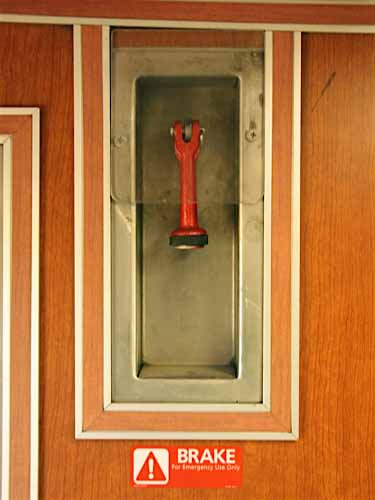
Jun 2016 / RWH
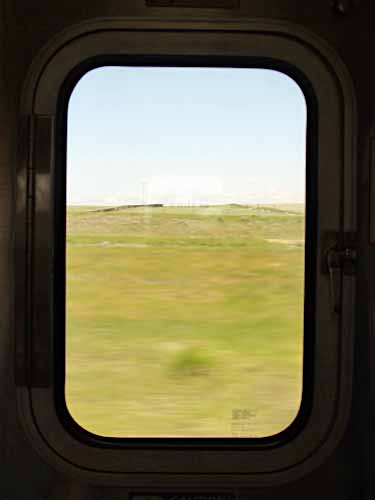
Jun 2016 / RWH
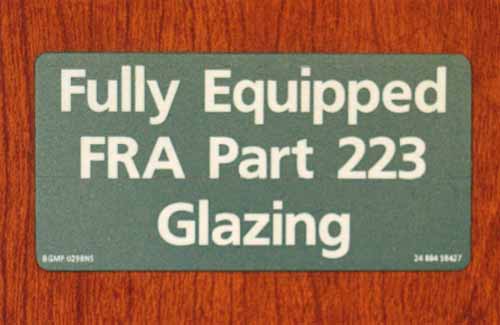
Jun 2016 / RWH
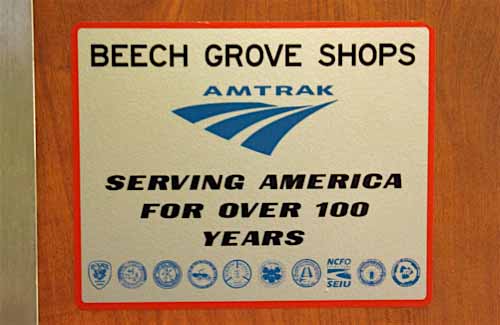
Jun 2016 / RWH
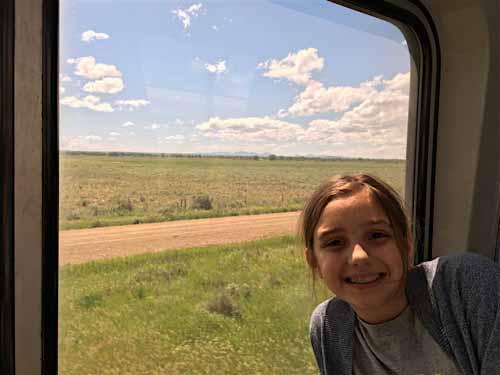
Jun 2016 / RWH
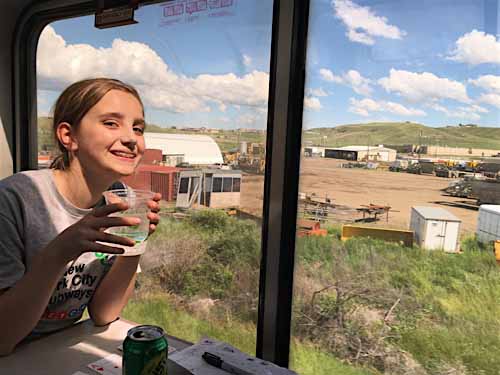
Jun 2016 / RWH
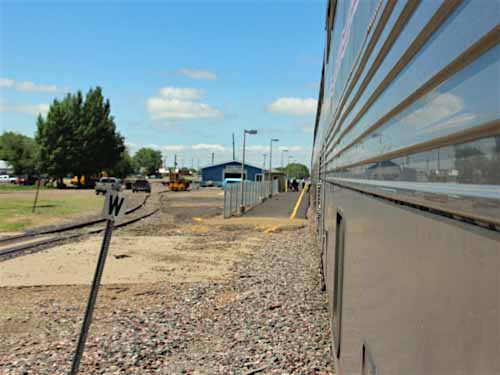
Wolf Point, Mt / Jun 2016 / RWH
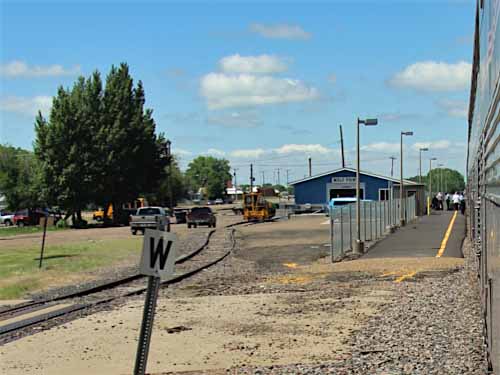
Wolf Point, Mt / Jun 2016 / RWH

Click to see the Wolf Point depot plotted on a Google Maps page
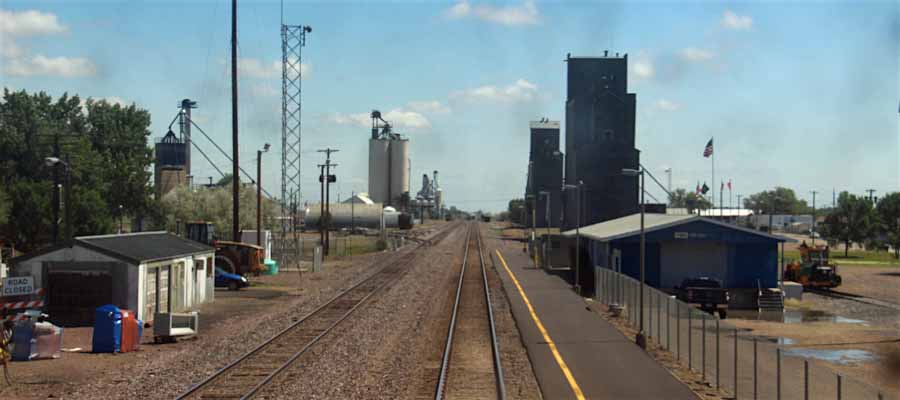
Wolf Point, Mt / Jun 2016 / RWH
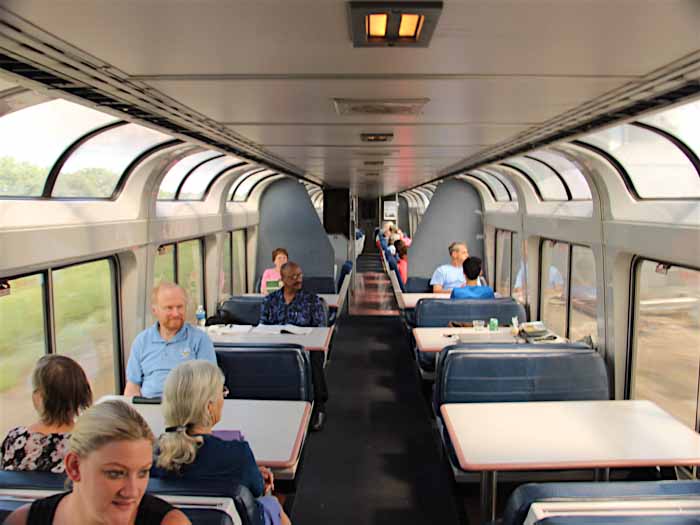
Jun 2016 / RWH
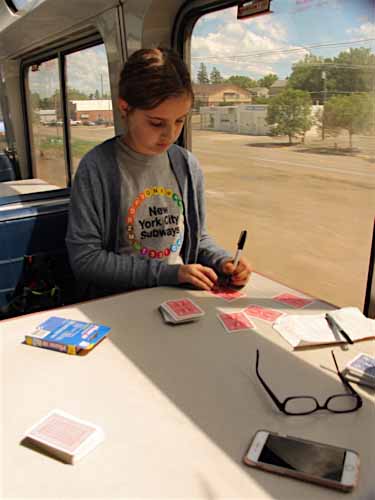
Jun 2016 / RWH
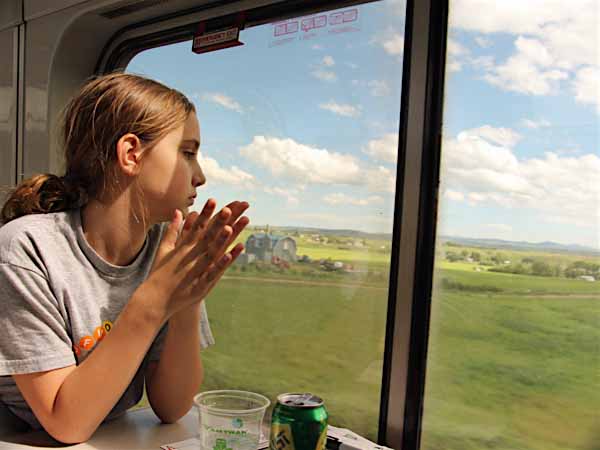
Jun 2016 / RWH
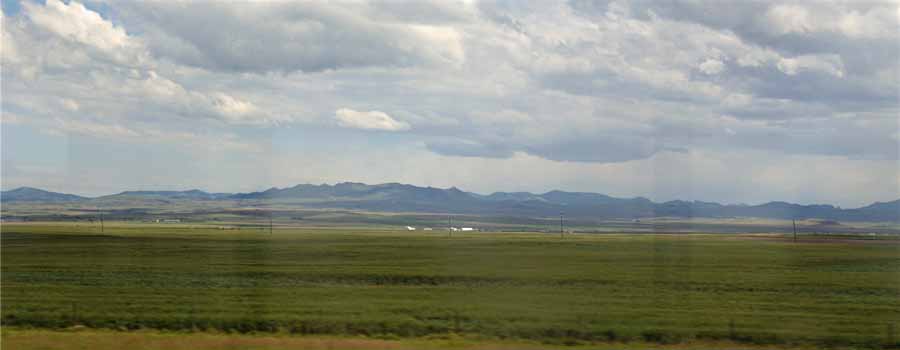
Jun 2016 / RWH

Havre, Montana

 When we detrained for 30 minutes in modest Havre, Montana, I kept thinking to myself, "This place seems familiar." As this was my frist trip through the Big Sky state, I knew it was not because I had been to this spot before. Walking to the front of #7 to take some requisite photos of the locomotives -- Havre being the first stop long enough to make the trek to the front end -- it suddenly dawned on my why this whole scene struck a chord: the lights. I knew I had seen those unusual hanging lights before ... in my father's black and white 120 negatives. Dad rode the Empire Builder in 1975 and likewise detrained in Havre, long enough to snap some photos that included an Amtrak SDP45, a Burlington Northern switcher, and what must have been some ex Great Northern baggage and head end cars. Only three photos snapped, but in all three, unique overhead hanging lights. 1975 meant that Amtrak had only been stopping in Havre for 48 months or more. Who knows what sort of secondhand equipment made up the Builder's consist on that trip. By the time of our stop this summer, Amtrak had pulled in under these lights some 16,000+ times -- 40 years later than my dad's one and only visit to Havre. The Great Northern steamer on display was a nice treat, and all the smokers riding with us got a smoke break long enough for me to grab my roster shots of most of the equipment in our movement. Wonder if they'll still be using those overhead bulbs 40 years from now?
When we detrained for 30 minutes in modest Havre, Montana, I kept thinking to myself, "This place seems familiar." As this was my frist trip through the Big Sky state, I knew it was not because I had been to this spot before. Walking to the front of #7 to take some requisite photos of the locomotives -- Havre being the first stop long enough to make the trek to the front end -- it suddenly dawned on my why this whole scene struck a chord: the lights. I knew I had seen those unusual hanging lights before ... in my father's black and white 120 negatives. Dad rode the Empire Builder in 1975 and likewise detrained in Havre, long enough to snap some photos that included an Amtrak SDP45, a Burlington Northern switcher, and what must have been some ex Great Northern baggage and head end cars. Only three photos snapped, but in all three, unique overhead hanging lights. 1975 meant that Amtrak had only been stopping in Havre for 48 months or more. Who knows what sort of secondhand equipment made up the Builder's consist on that trip. By the time of our stop this summer, Amtrak had pulled in under these lights some 16,000+ times -- 40 years later than my dad's one and only visit to Havre. The Great Northern steamer on display was a nice treat, and all the smokers riding with us got a smoke break long enough for me to grab my roster shots of most of the equipment in our movement. Wonder if they'll still be using those overhead bulbs 40 years from now?
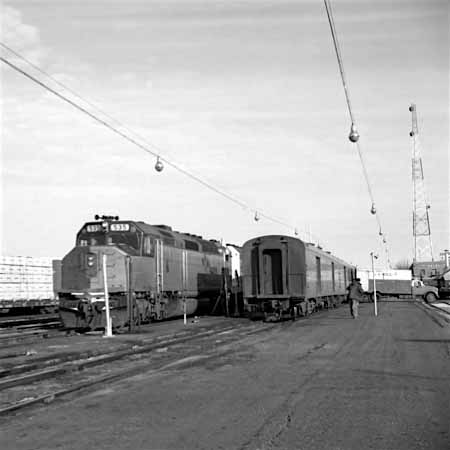
Havre, Mt / 1975 / JCH
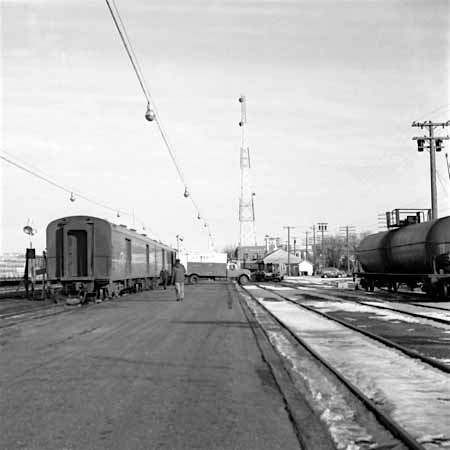
Havre, Mt / 1975 / JCH
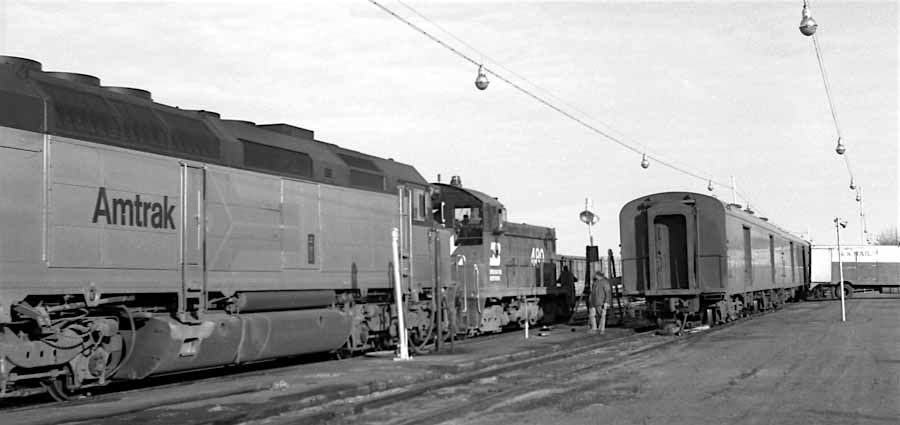
Havre, Mt / 1975 / JCH
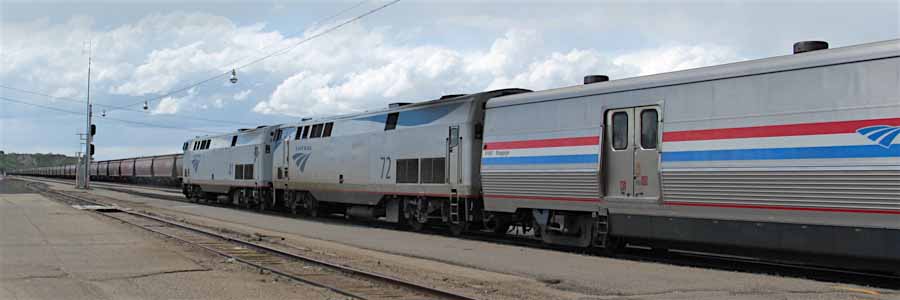
Jun 2016 / RWH
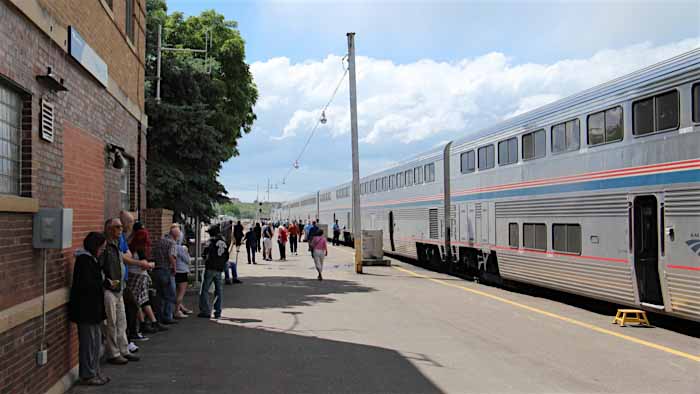
Jun 2016 / RWH
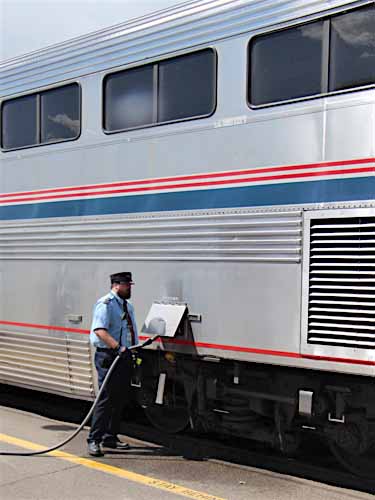
RWH
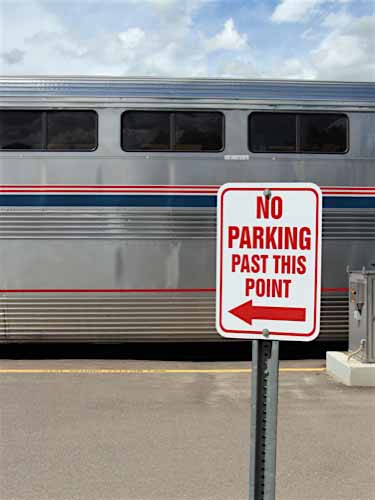
RWH
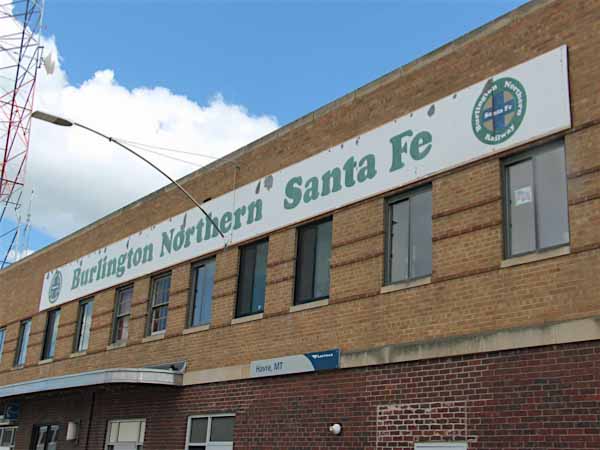
Jun 2016 / RWH

Click to see the Havre Amtrak station area plotted on a Google Maps page
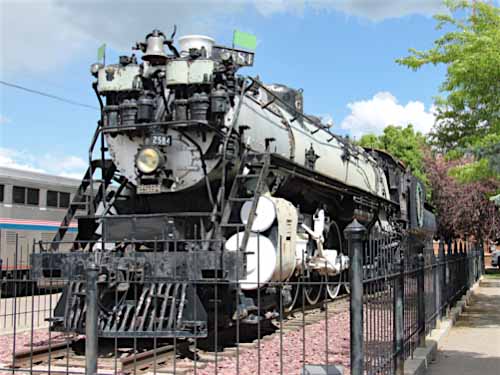
Great Northern #2584
Havre, Mt / Jun 2016 / RWH


Great Northern #2584
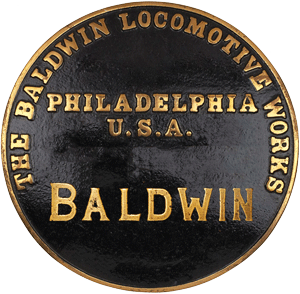
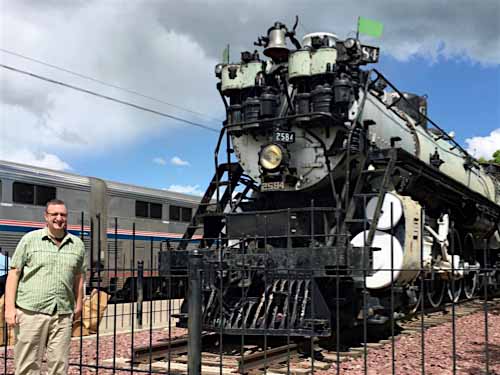
Havre, Mt / Jun 2016 / Ella Hawkins
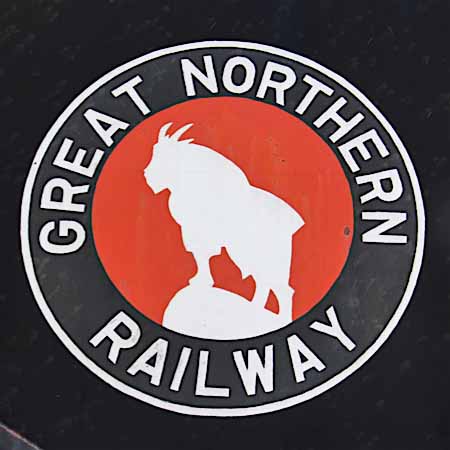
RWH
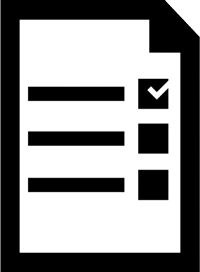 Amtrak #7 partial consist - June 16, 2016
Amtrak #7 partial consist - June 16, 2016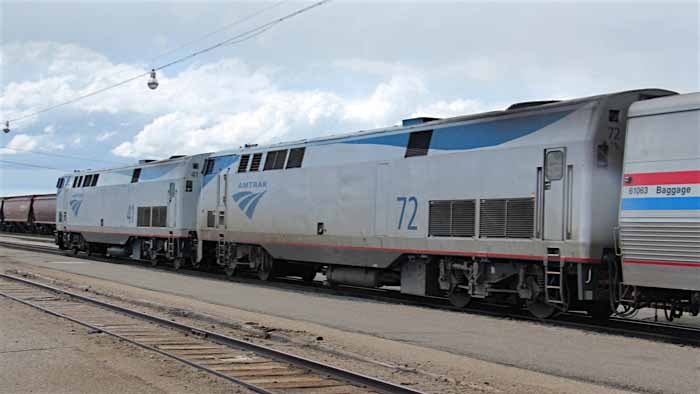
Amtrak #41 and #72
General Electric P42DC lashup
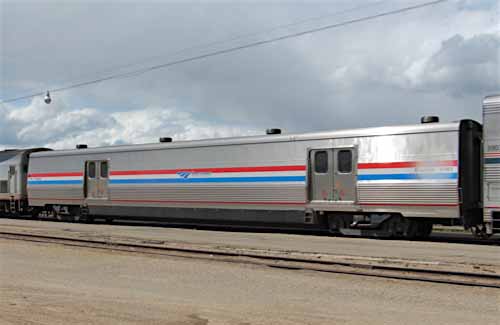
Amtrak #61063
baggage car

Amtrak #39039
transition crew sleeper
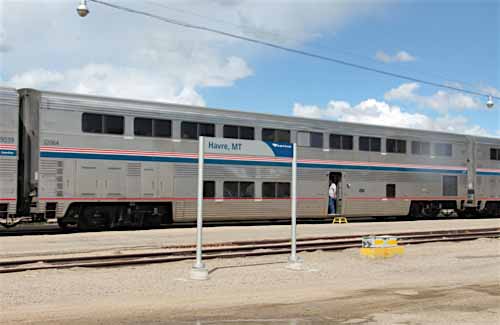
Amtrak #32064
Superliner sleeper car
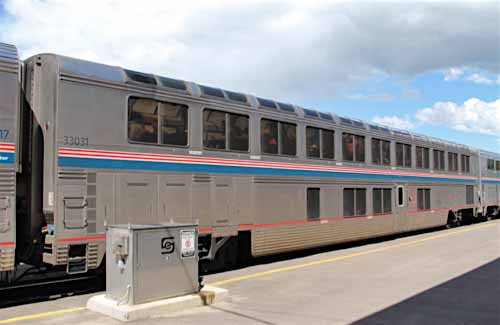
Amtrak #33031
Superliner sightseer lounge
all photos above at Havre, Mt / Jun 2016 / RWH
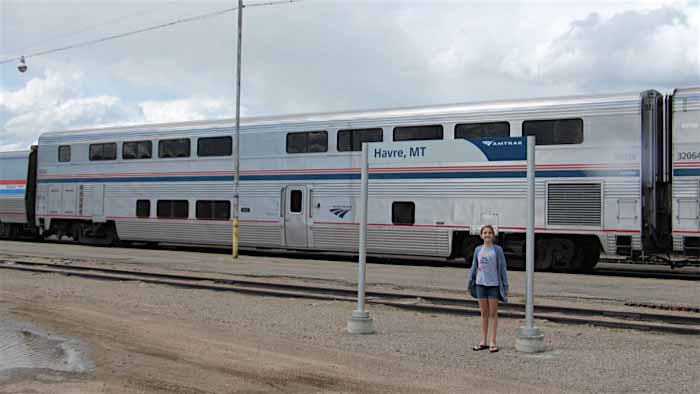
Havre, Mt / Jun 2016 / RWH
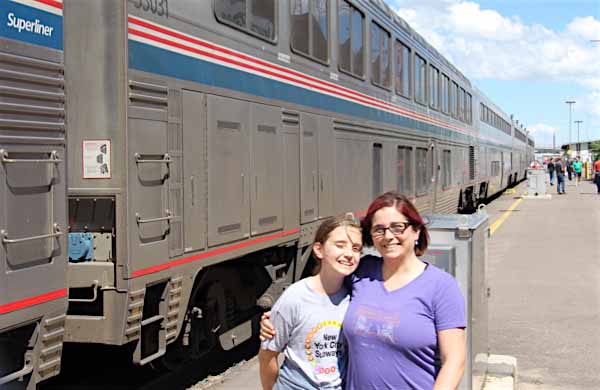
Havre, Mt / Jun 2016 / RWH

Havre, Mt / Jun 2016 / RWH

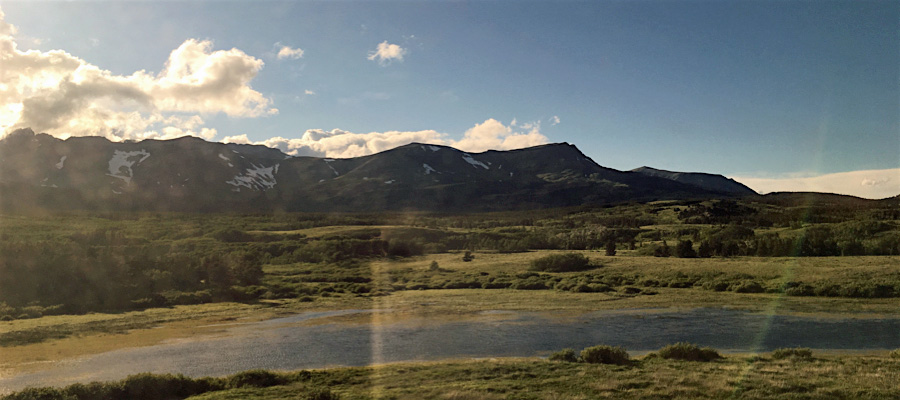
Lewis and Clark National Forest / Jun 2016 / RWH

Izaak Walton Inn / Essex, Mt / Jun 2016 / RWH

Click to see the Izaak Walton Inn plotted on a Google Maps page
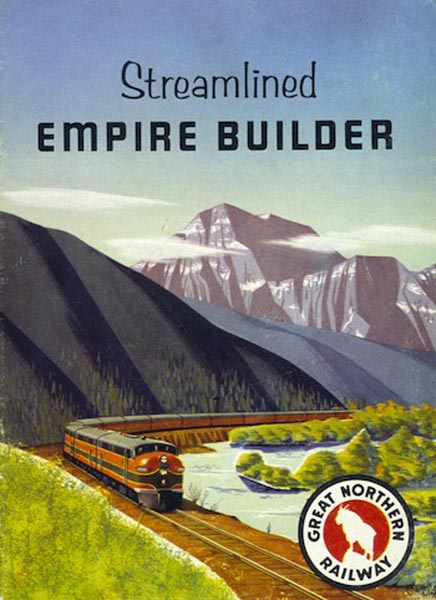
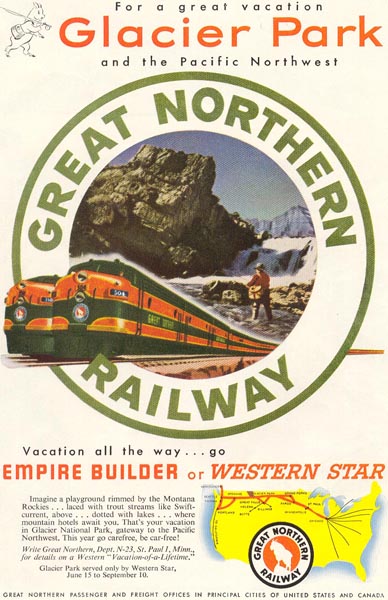

Whitefish, Mt / Jun 2016 / RWH
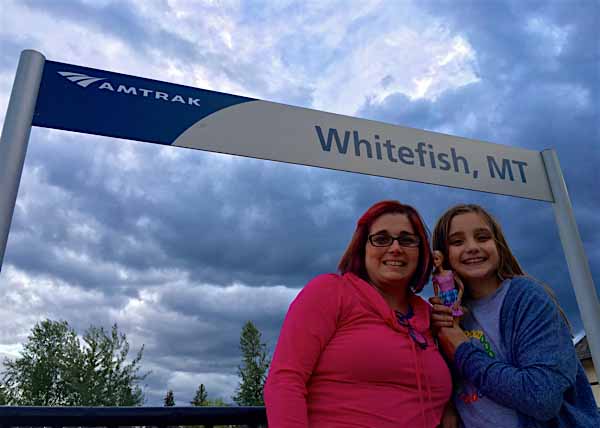
Whitefish, Mt / Jun 2016 / RWH

Whitefish, Mt / Jun 2016 / RWH

Whitefish, Mt / Jun 2016

Click to see the Whitefish Amtrak station plotted on a Google Maps page
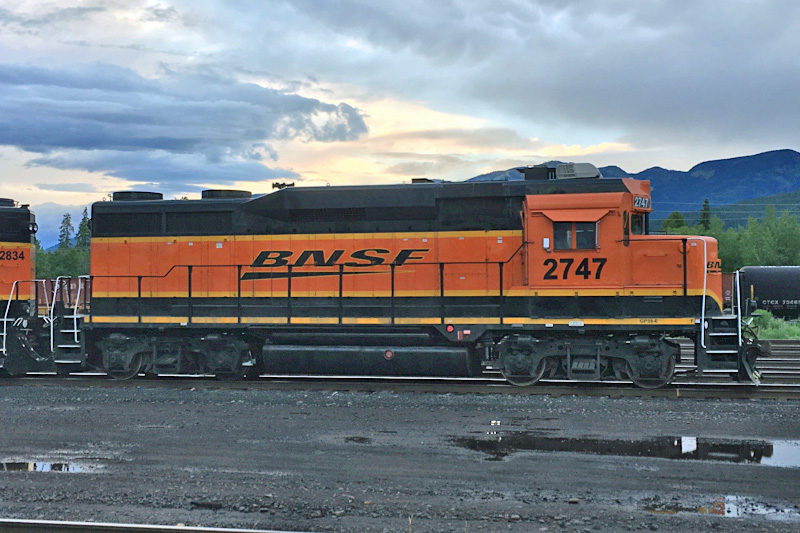
Burlington Northern Santa Fe #2747
Whitefish, Mt / Jun 2016 / RWH


Burlington Northern Santa Fe #2747
blt Chicago Burlington & Quincey #969
to Burlington Northern #2246
to Burlington Northern Santa Fe #2747
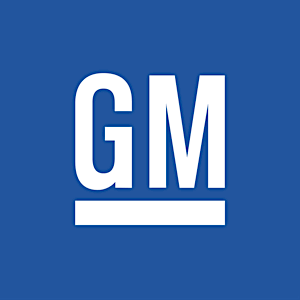

Whitefish, Mt / Jun 2016 / RWH
Spokane, Wa

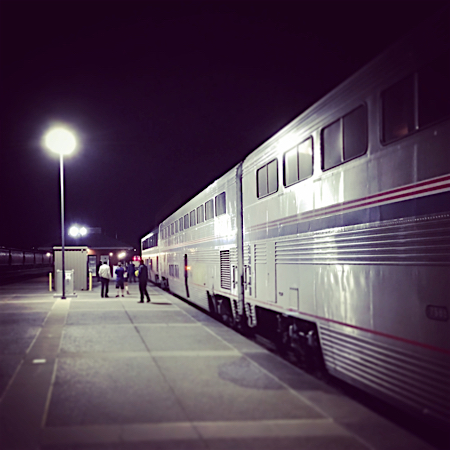 My adventurous 11 year old agreed to wake up with me at 1:30am during our second night onboard #7 to step out onto the platform at Spokane, Washington, to see the crew split the Builder into two smaller sections -- sending #7 on to Seattle while we stayed behind with the new #27 -- a lone P42 and four Superliner cars, including our sleeper on the rear, now headed for Portland, Oregon. I slept through my 1:15am alarm but awoke around 1:30 when I realized the power was off in our sleeper and it was getting warm in our roomette without A/C. I knew this meant that the power was uncoupled from the front and that they were moving rolling stock around outside. Ella and I stepped outside in time to see the time-honored positioning and coupling of the unit to our new consist. A back up move. Couple. Stretch. Air brakes. HEP cables. And with that the running lights and air conditioning compressors fired back up in our now four-car train. The smokers got the 5 minute warning, and eventually we all boarded our respective cars for the dark ride southwest into the Columbia River gorge. This, my only visit to the city of Spokane, Washington.
My adventurous 11 year old agreed to wake up with me at 1:30am during our second night onboard #7 to step out onto the platform at Spokane, Washington, to see the crew split the Builder into two smaller sections -- sending #7 on to Seattle while we stayed behind with the new #27 -- a lone P42 and four Superliner cars, including our sleeper on the rear, now headed for Portland, Oregon. I slept through my 1:15am alarm but awoke around 1:30 when I realized the power was off in our sleeper and it was getting warm in our roomette without A/C. I knew this meant that the power was uncoupled from the front and that they were moving rolling stock around outside. Ella and I stepped outside in time to see the time-honored positioning and coupling of the unit to our new consist. A back up move. Couple. Stretch. Air brakes. HEP cables. And with that the running lights and air conditioning compressors fired back up in our now four-car train. The smokers got the 5 minute warning, and eventually we all boarded our respective cars for the dark ride southwest into the Columbia River gorge. This, my only visit to the city of Spokane, Washington.

Click to see the Spokane Amtrak station plotted on a Google Maps page

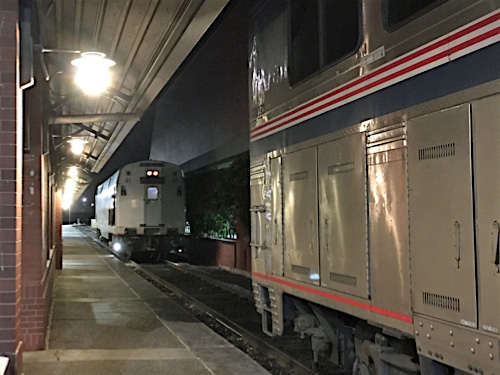

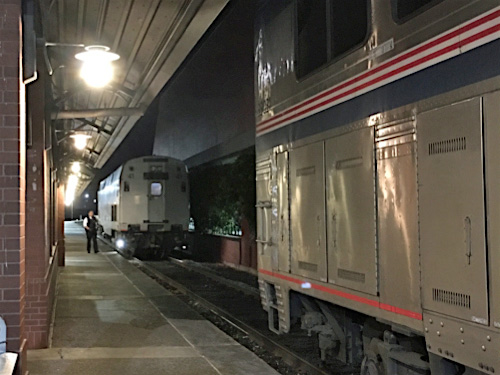
ll photos above at Spokane, Wa / Jun 2016 / RWH
Day 3 - Washington, Oregon
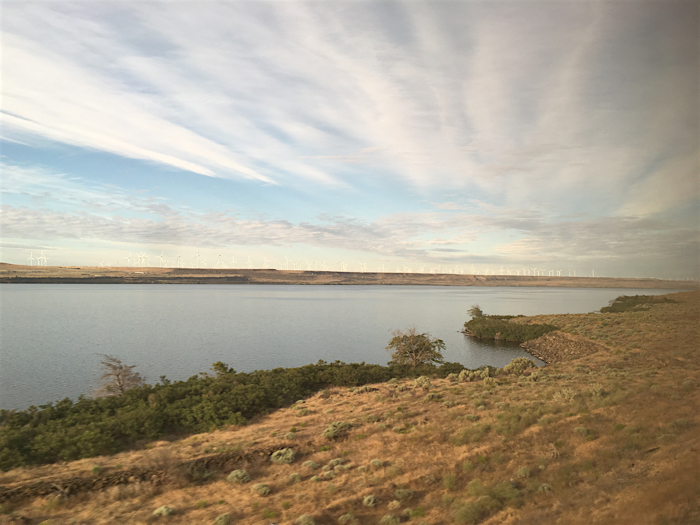
Columbia River / Bickleton, Wa / Jun 2016 / RWH

Columbia River / Bickleton, Wa / Jun 2016 / RWH

Columbia River / Bickleton, Wa / Jun 2016 / RWH

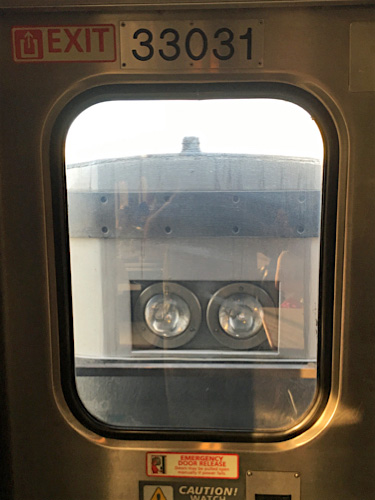 When the Empire Builder is split in Spokane early each morning, the Superliner Sightseer lounge that normally rides in the middle of movement suddenly becomes the head end car of the train, snug up against the lone unit in charge of the Portland section. There's no more transition car to take the top level entryway down to the normal level that would interface with the rear of the locomotive or the baggage car. The upside of this arrangement is that one can stand at front door of the lounge car and see right down the roofline of the P42. This makes for great viewing as the train plies the Columbia River Gorge. You have to tolerate the hot diesel fumes that comes through the door seals, but that's a small price to pay for feeling as though you have a backseat to the engineman. Below are some snapshots and video from several minutes of riverside running along the Columbia. We passed several BNSF movements headed the other way. A great ride for our third day onboard.
When the Empire Builder is split in Spokane early each morning, the Superliner Sightseer lounge that normally rides in the middle of movement suddenly becomes the head end car of the train, snug up against the lone unit in charge of the Portland section. There's no more transition car to take the top level entryway down to the normal level that would interface with the rear of the locomotive or the baggage car. The upside of this arrangement is that one can stand at front door of the lounge car and see right down the roofline of the P42. This makes for great viewing as the train plies the Columbia River Gorge. You have to tolerate the hot diesel fumes that comes through the door seals, but that's a small price to pay for feeling as though you have a backseat to the engineman. Below are some snapshots and video from several minutes of riverside running along the Columbia. We passed several BNSF movements headed the other way. A great ride for our third day onboard.
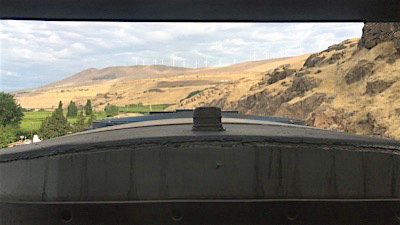
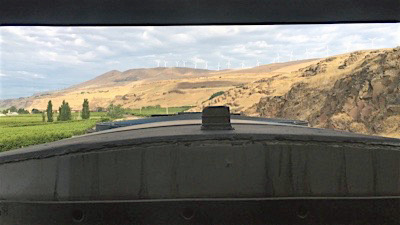
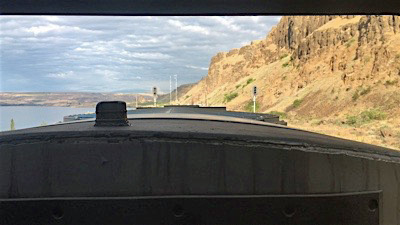

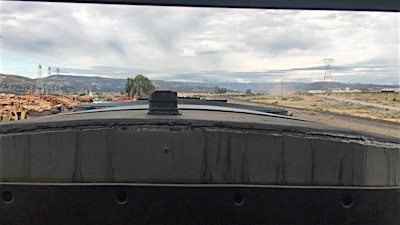
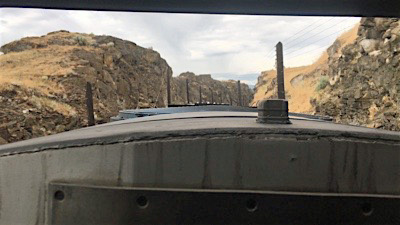


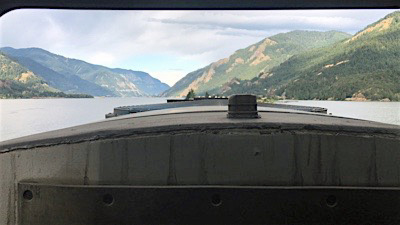
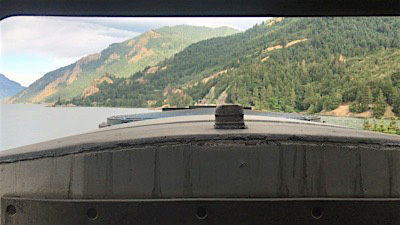
Columbia River Gorge / Jun 2016 / RWH
Columbia River Gorge / Jun 2016 / RWH
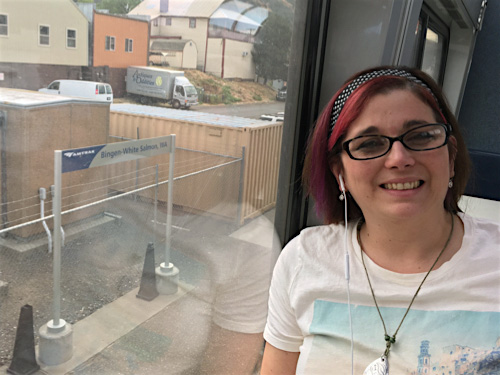
Bingen, Wa / Jun 2016 / RWH
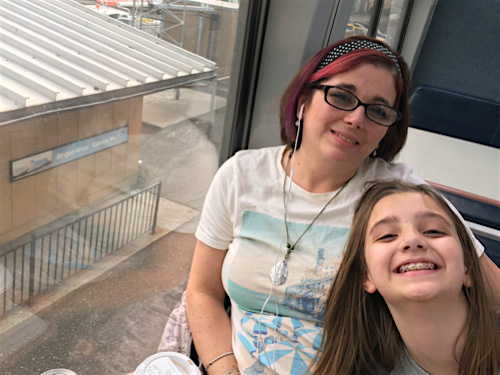
Bingen, Wa / Jun 2016 / RWH
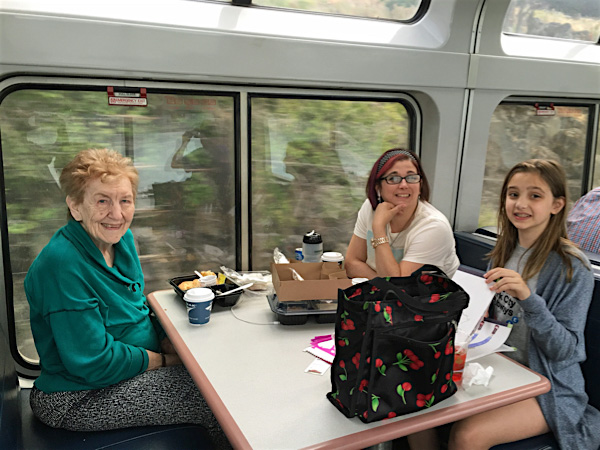
White Salmon, Wa / Jun 2016 / RWH

Columbia River Gorge / Jun 2016 / RWH
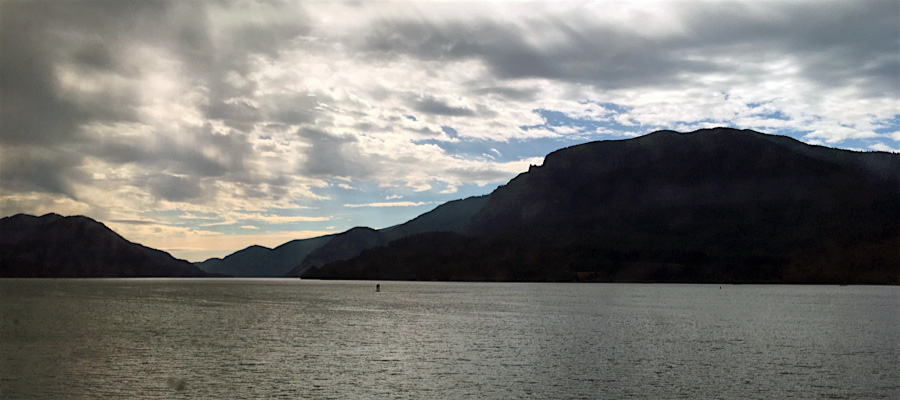
Columbia River Gorge / Jun 2016 / RWH
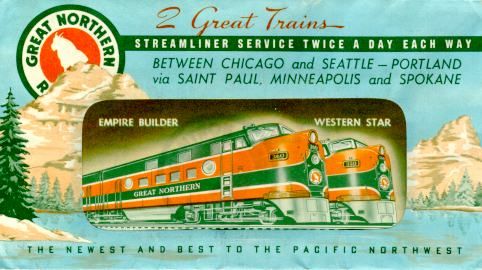

 Portland Union Station
Portland Union Station
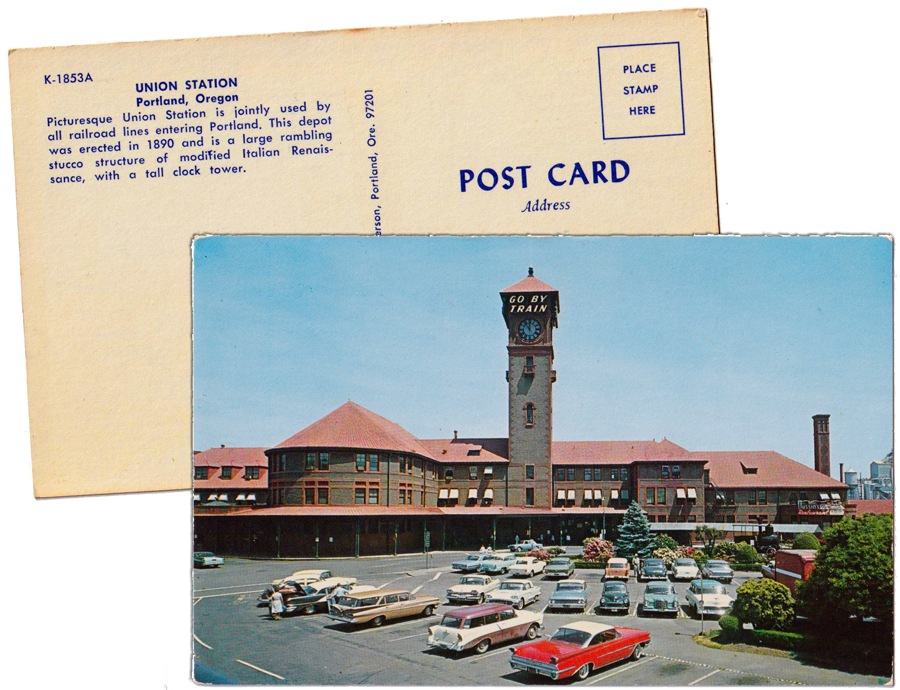
postcard / collection

 Portland Union Station was constructed in 1896 and has been in continuous operation since that time. Originally constructed as part of the Northwest Pacific Terminal Company, it was owned jointly by the Northern Pacific, Union Pacific and Southern Pacific railroads. The centerpiece of the Romanesque and Queen Anne architecture is the 150-foot clock tower with its four-sided Seth Thomas clock that makes this landmark easily distinguishable. By 1922, every railroad passenger train serving Portland utilized Union Station. Today, Portland Union Station is situated in an area that boasts a variety of businesses and attractions which makes it an excellent arrival/departure point for people interested in the “'The City of Roses.” Portland Union Station was added to the National Register of Historic Places in 1975.
Portland Union Station was constructed in 1896 and has been in continuous operation since that time. Originally constructed as part of the Northwest Pacific Terminal Company, it was owned jointly by the Northern Pacific, Union Pacific and Southern Pacific railroads. The centerpiece of the Romanesque and Queen Anne architecture is the 150-foot clock tower with its four-sided Seth Thomas clock that makes this landmark easily distinguishable. By 1922, every railroad passenger train serving Portland utilized Union Station. Today, Portland Union Station is situated in an area that boasts a variety of businesses and attractions which makes it an excellent arrival/departure point for people interested in the “'The City of Roses.” Portland Union Station was added to the National Register of Historic Places in 1975.

Click to see Portland Union Station plotted on a Google Maps page
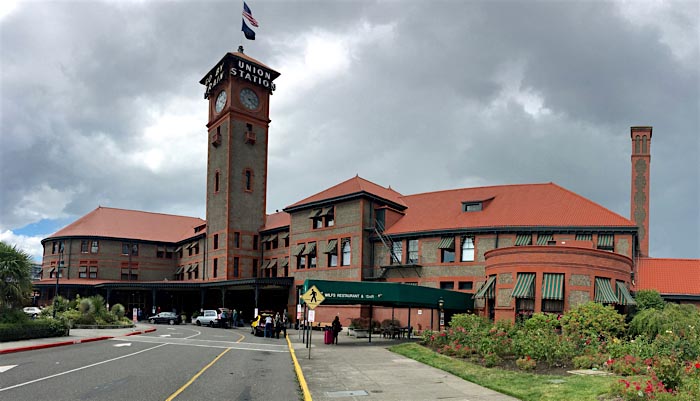
Portland, Or / Jun 2016 / RWH
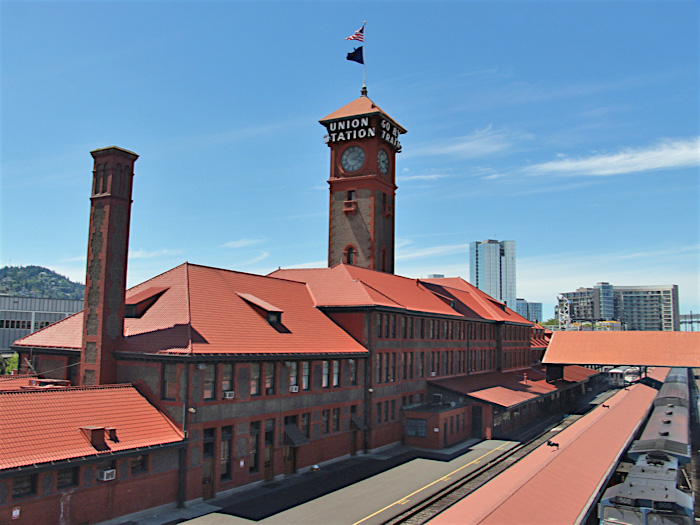
Portland, Or / Jun 2016 / RWH
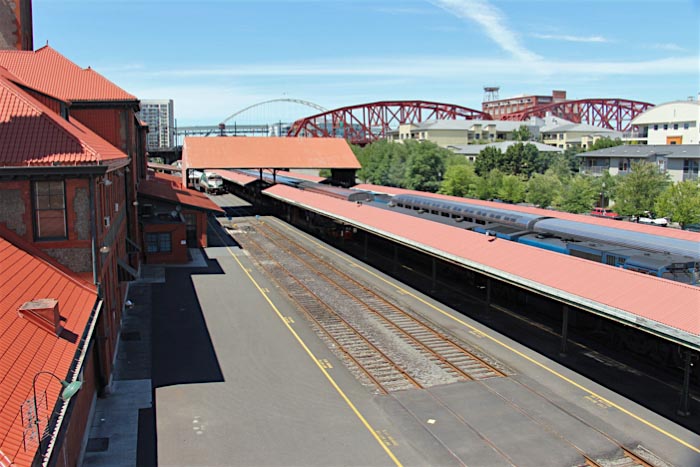
Portland, Or / Jun 2016 / RWH

Portland, Or / Jun 2016 / RWH
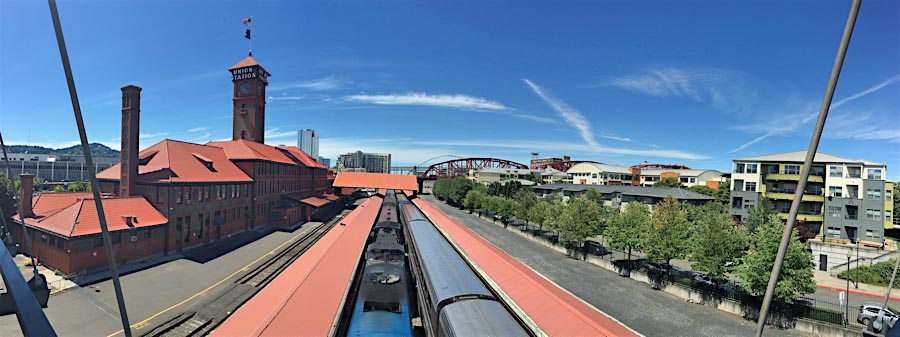
Portland, Or / Jun 2016 / RWH
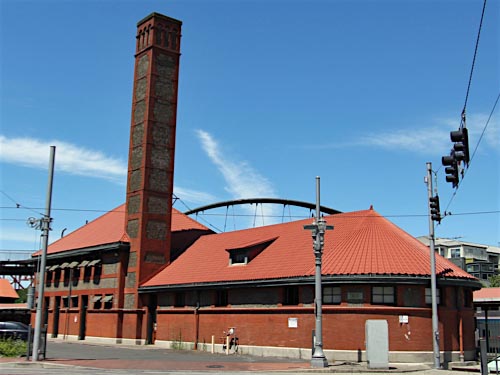
Portland, Or / Jun 2016 / RWH
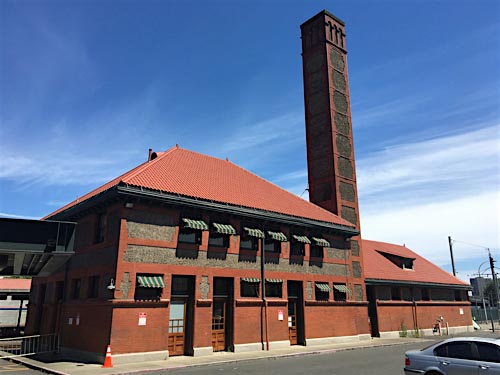
Portland, Or / Jun 2016 / RWH

Portland, Or / Jun 2016 / RWH
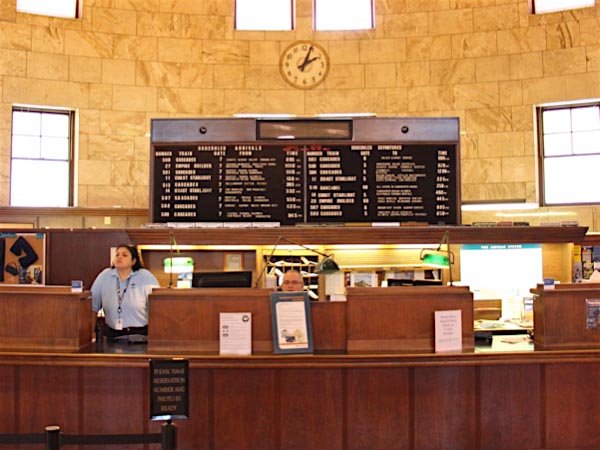
Portland, Or / Jun 2016 / RWH
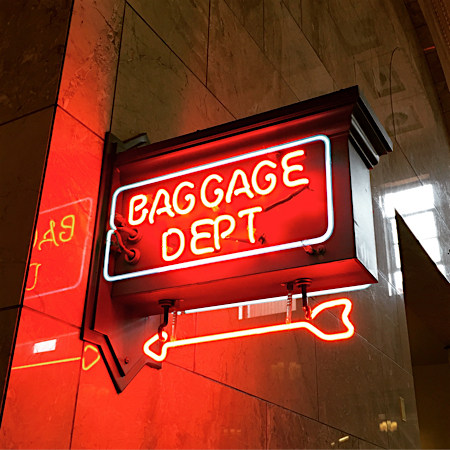
Portland, Or / Jun 2016 / RWH

Portland, Or / Jun 2016 / RWH
In 1987, the Portland Development Commission (PDC) purchased Union Station and 31 acres of former rail yards. A rehabilitation of the station occurred shortly after this acquisition including restoration of the painted flower patterns of the waiting room's ornate ceilings, reopening the 1920s era phone booths and repairing the red metal tile roof. The most recent change in 2003 was the addition of a central plaza at the main entryway containing an island planted with local and native plants. The access to the station was changed, a new street was built and a Thruway Bus boarding area was established. Today, the rail yard has become a residential and commercial district. Union Station has anchored one end of the downtown Portland Transit Mall since 1994.

Portland, Or / Jun 2016 / RWH
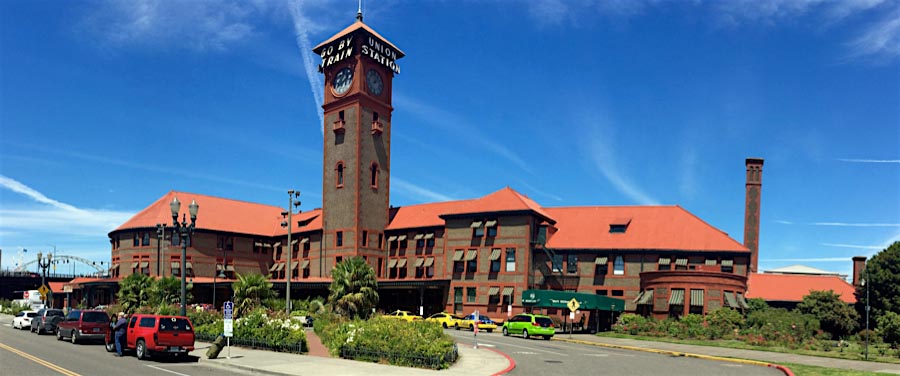
Portland, Or / Jun 2016 / RWH

Read more about the Portland Union Station
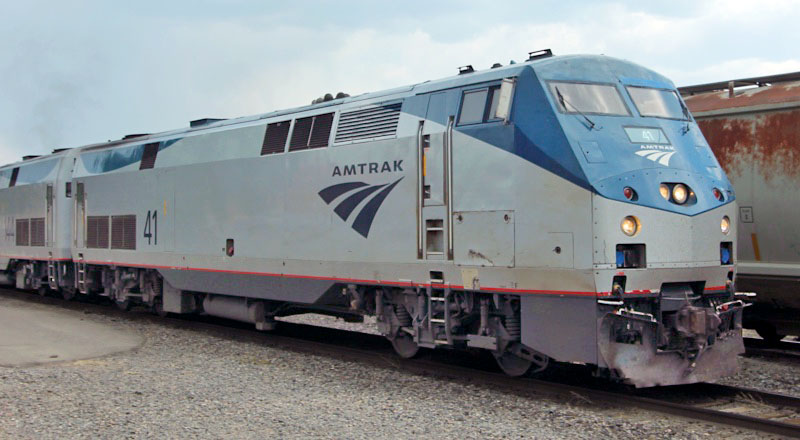
Amtrak #41
Portland, Or / Jun 2016 / RWH


Amtrak #41
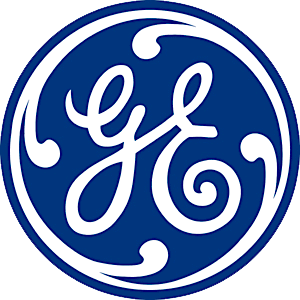
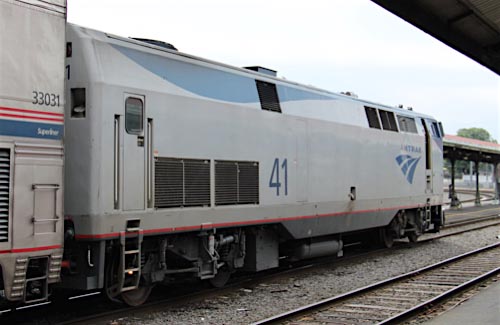
Portland, Or / Jun 2016 / RWH

Portland, Or / Jun 2016 / RWH
 Amtrak #27 consist - June 17, 2016
Amtrak #27 consist - June 17, 2016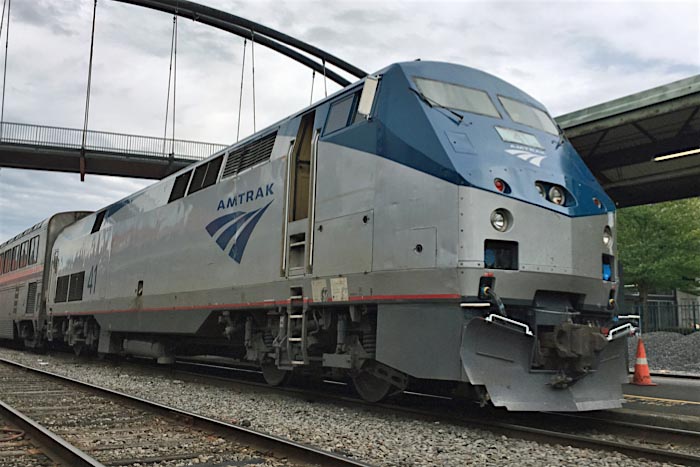
Amtrak #41
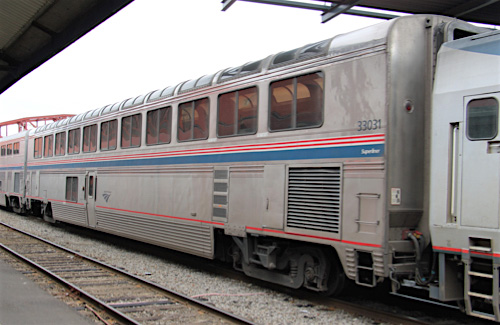
Amtrak #33031
Sightseer lounge
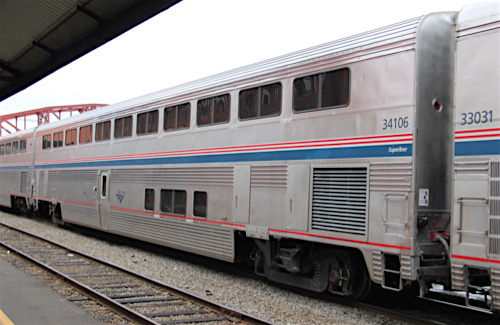
Amtrak #34106
Superliner coach
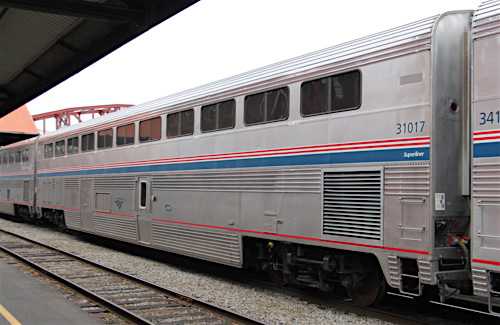
Amtrak #31017
Superliner coach-baggage

Amtrak #32065
Superliner sleeper
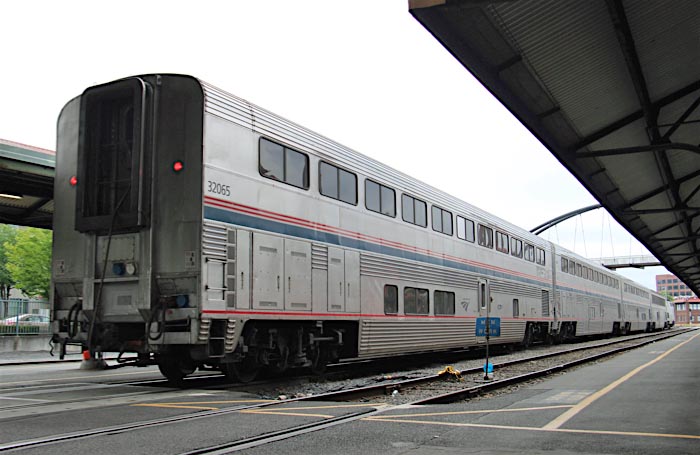
all photos above at Portland, Or / Jun 2016 / RWH
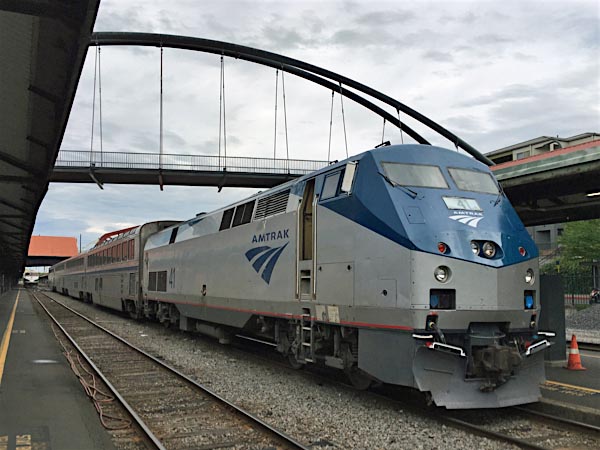
Portland, Or / Jun 2016 / RWH
Links / Sources
- Amtrak Empire Builder website
- Wikipedia article for Empire Builder
- Great Northern Railway Historical Society
- Great Northern Empire
